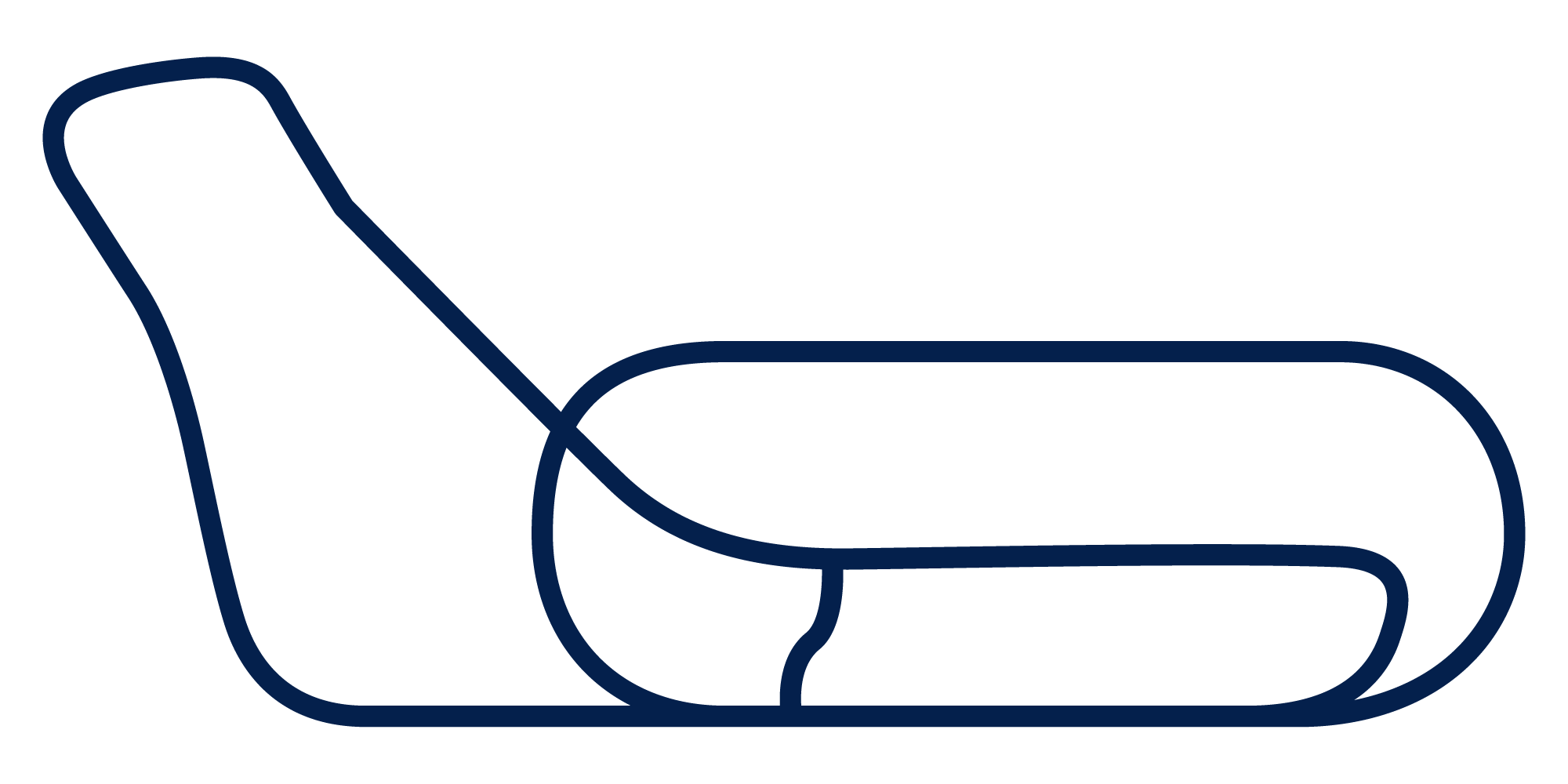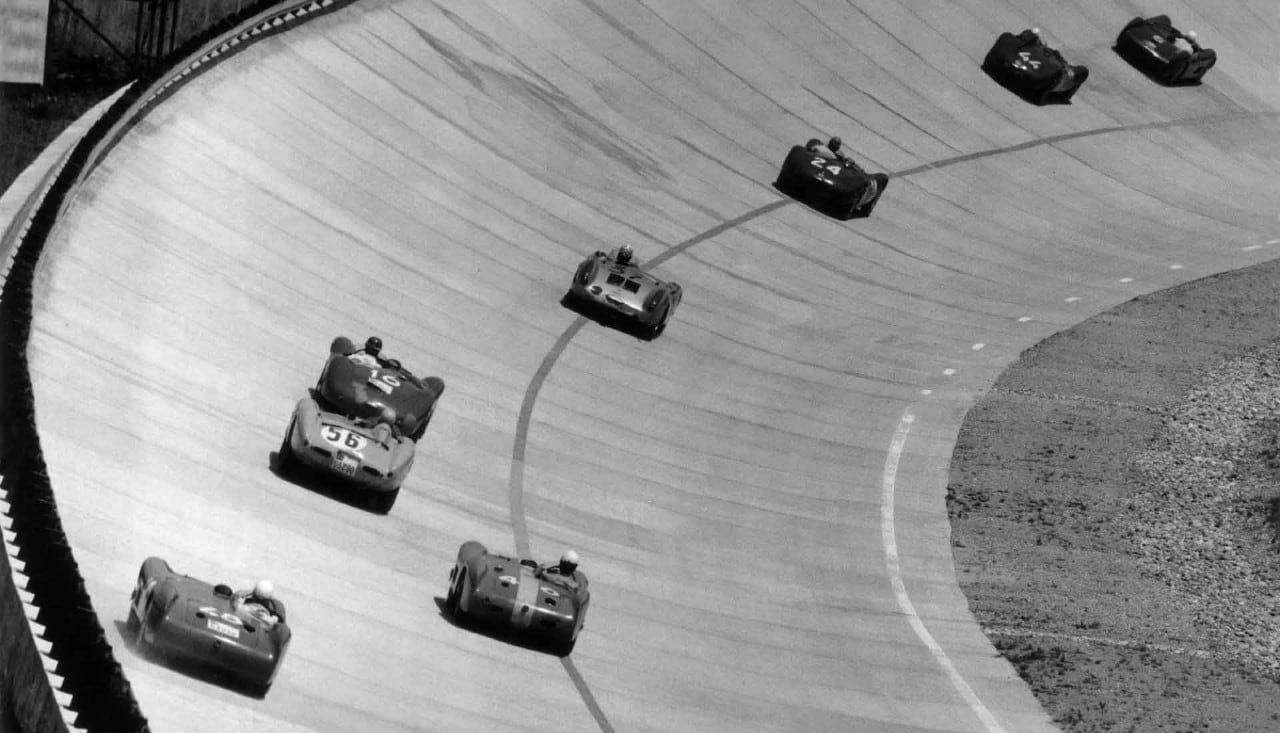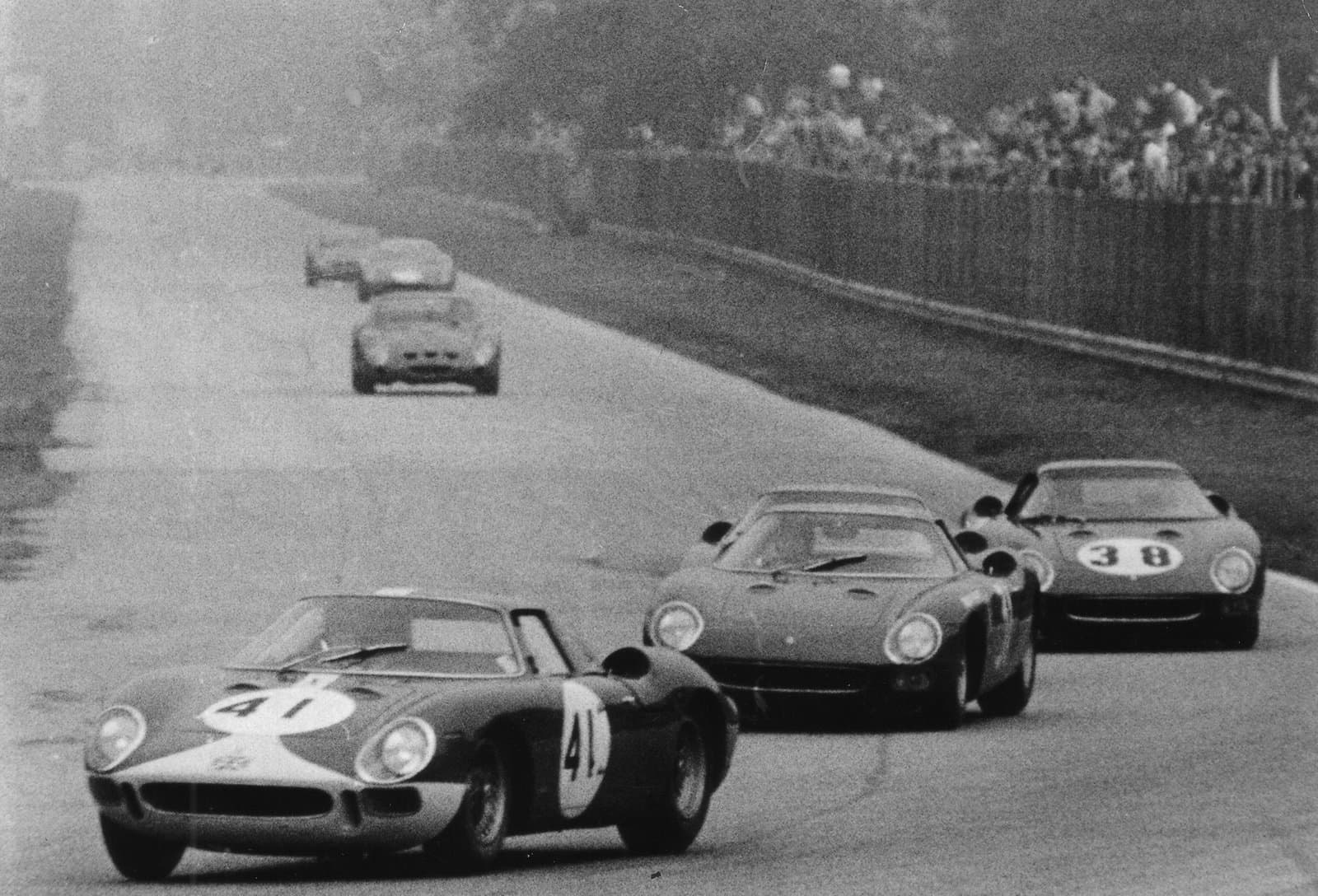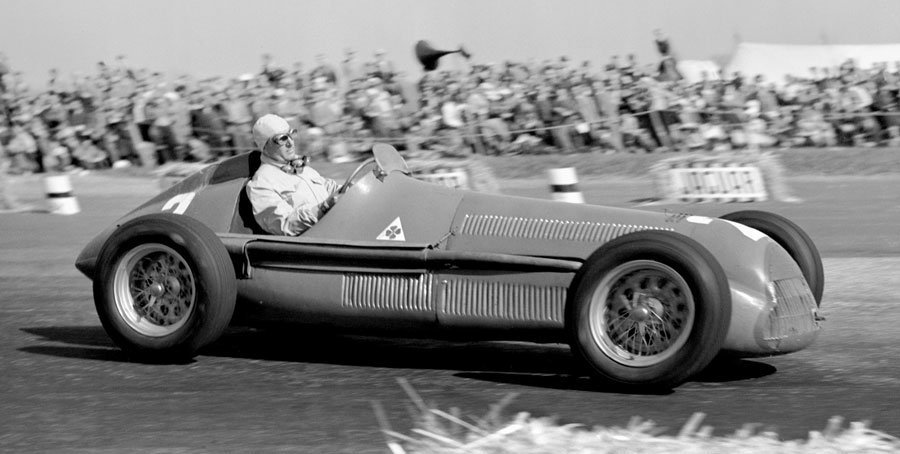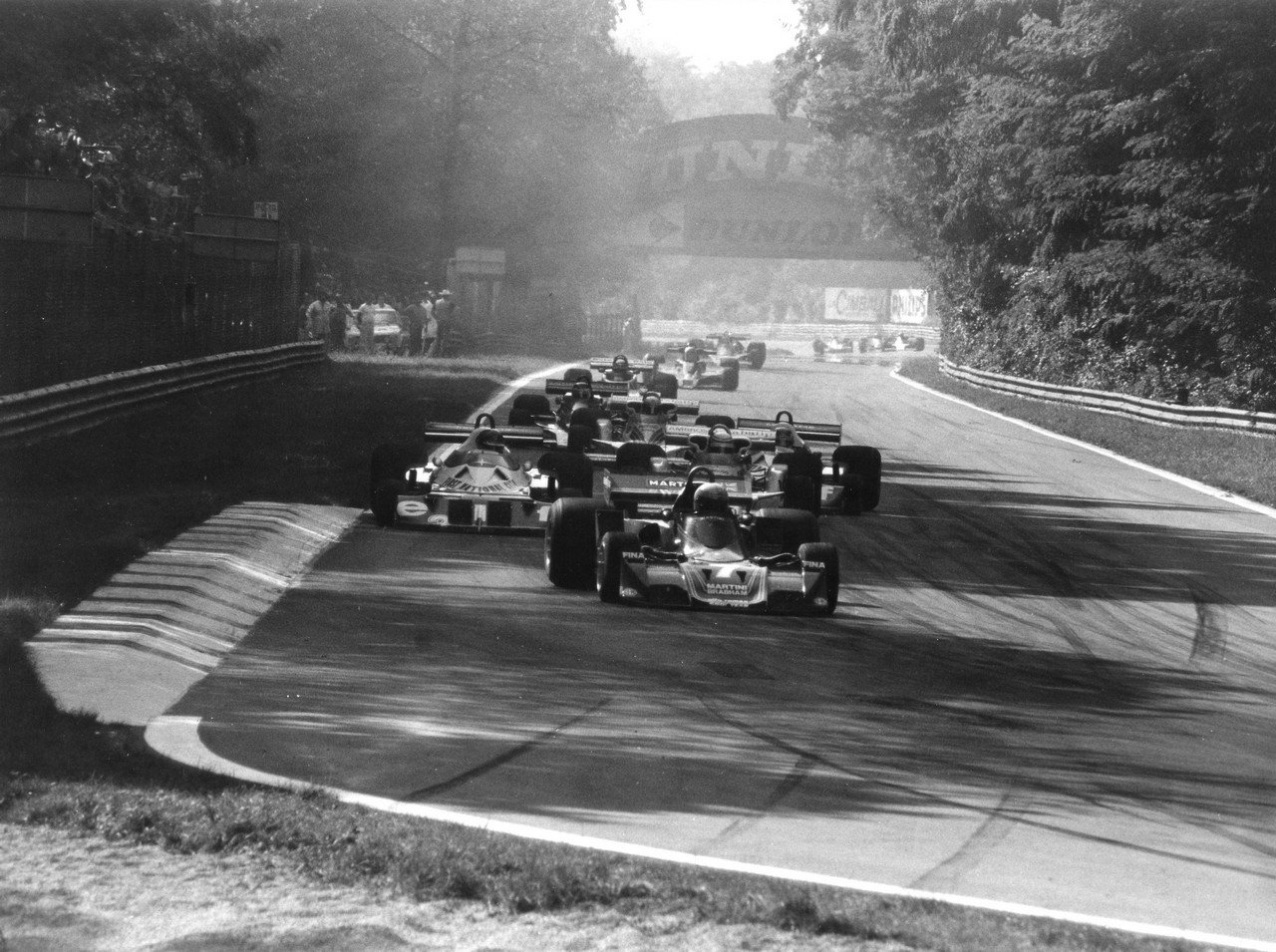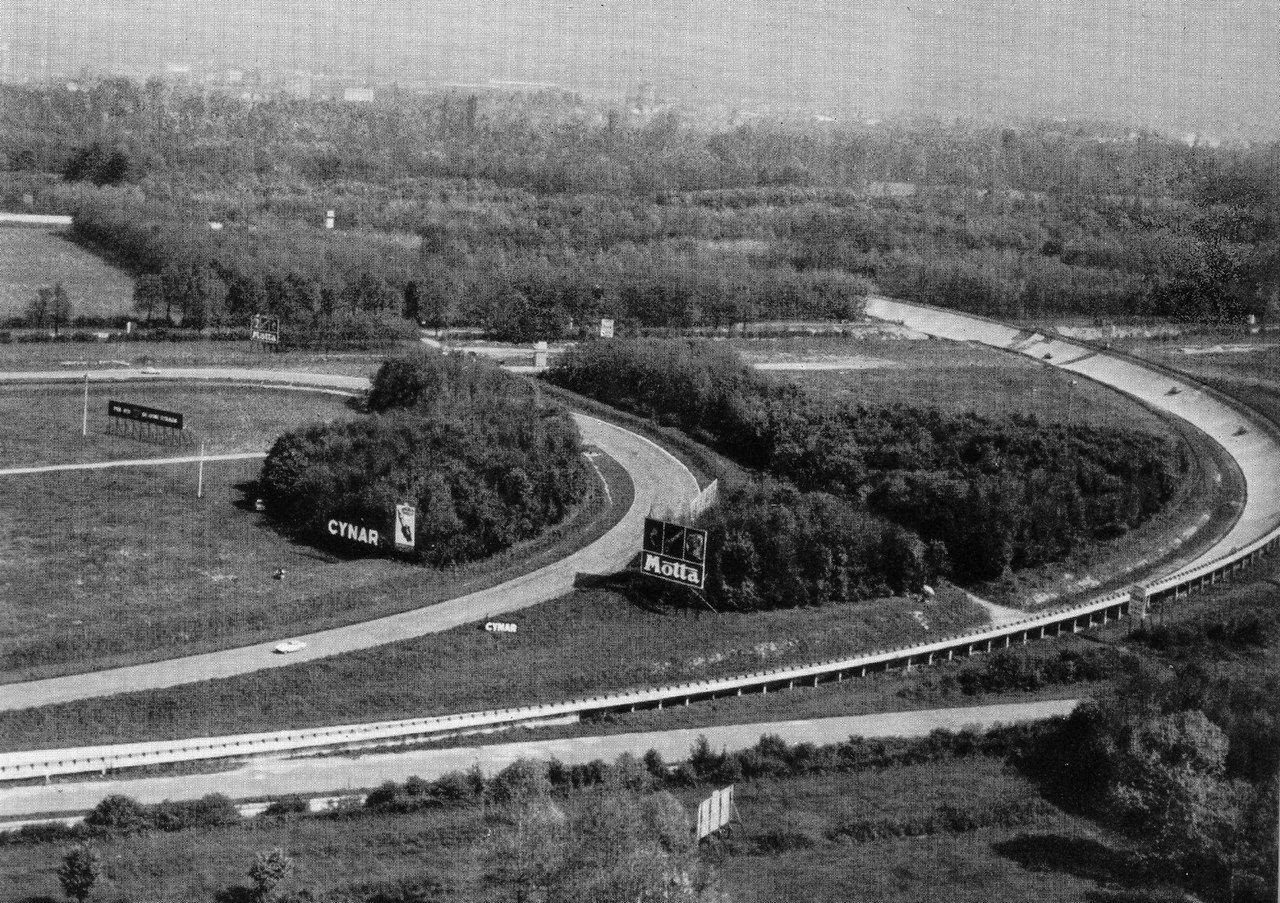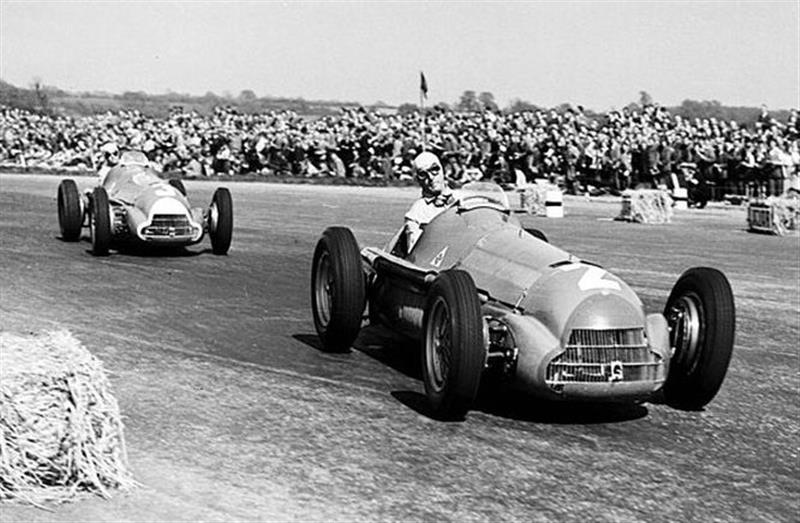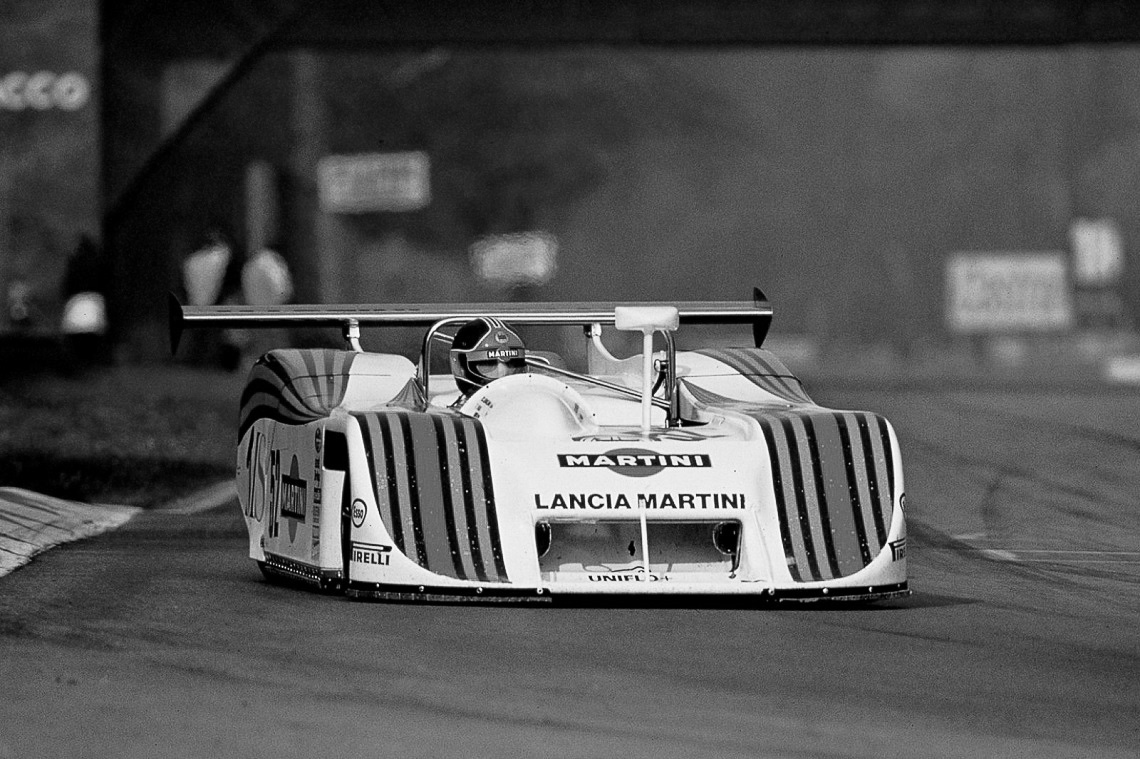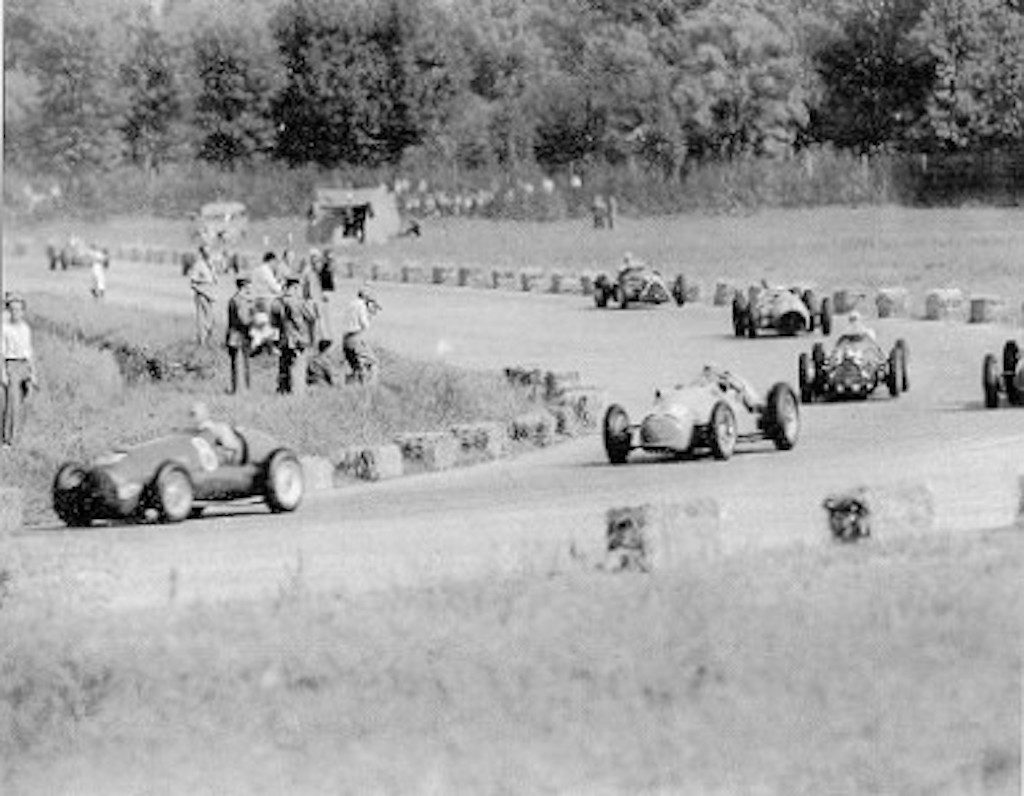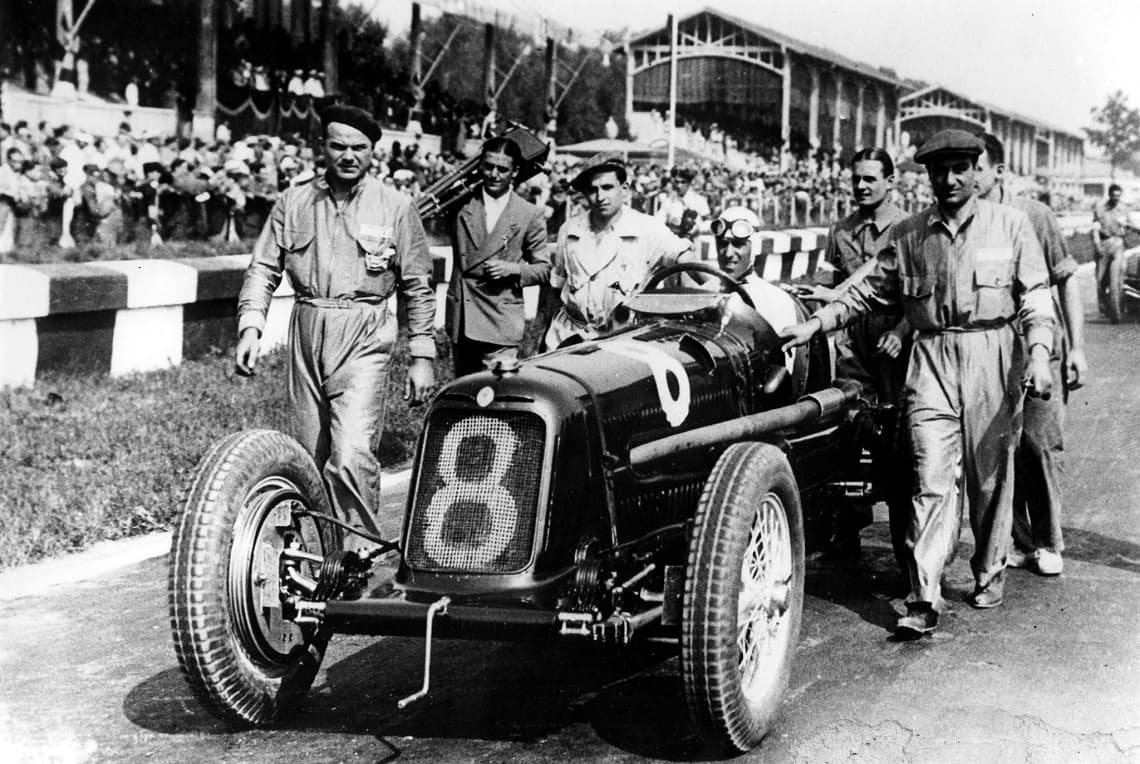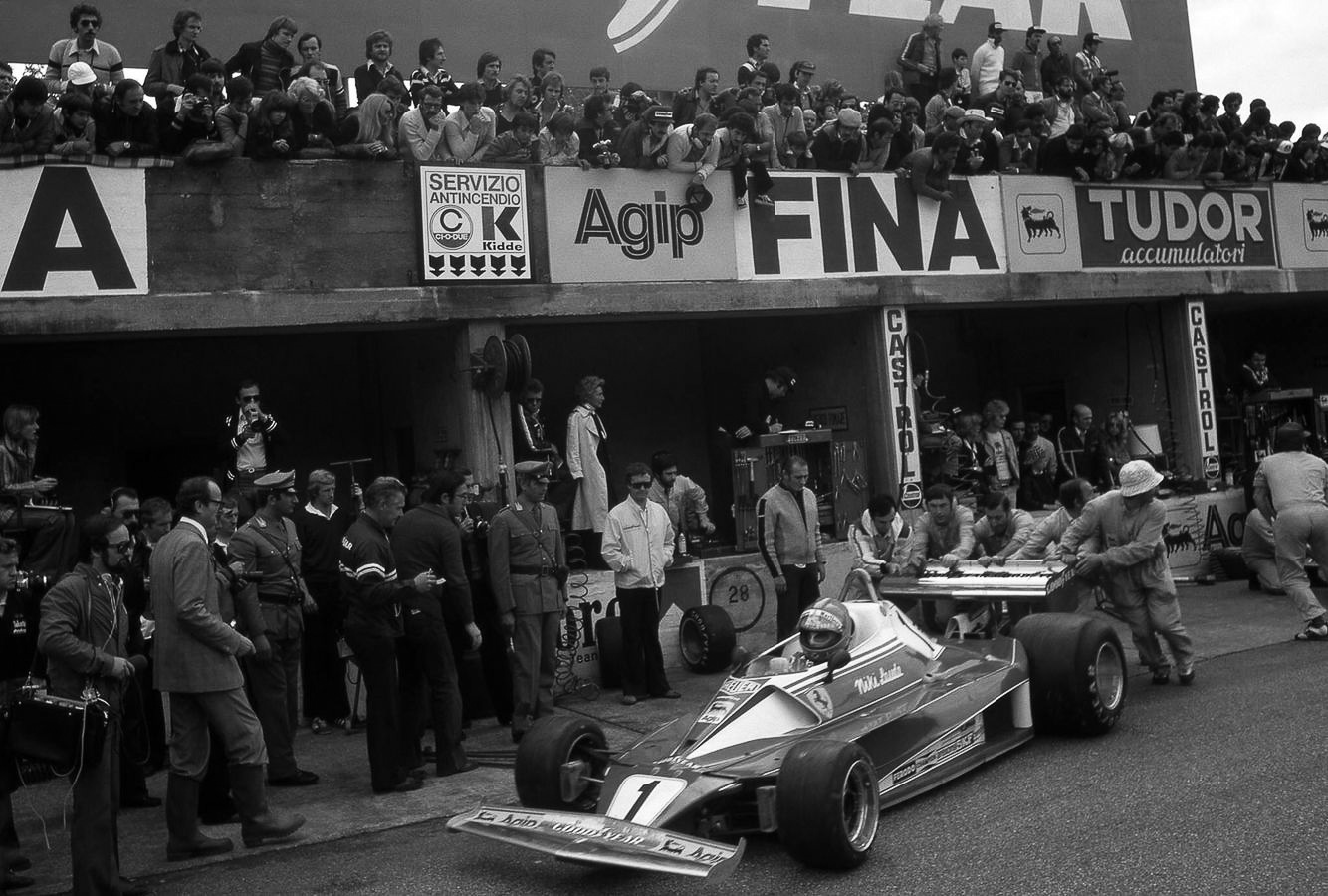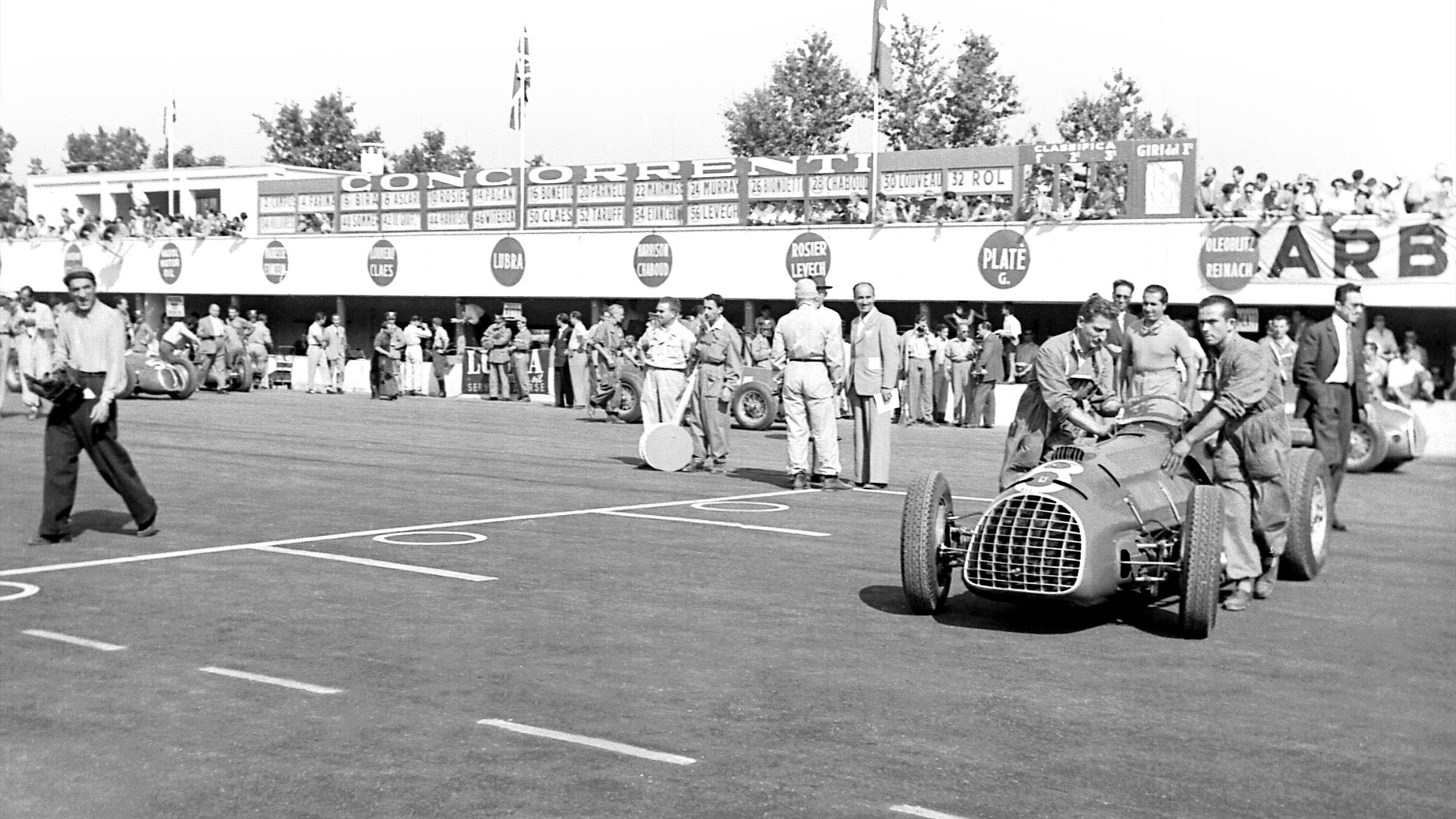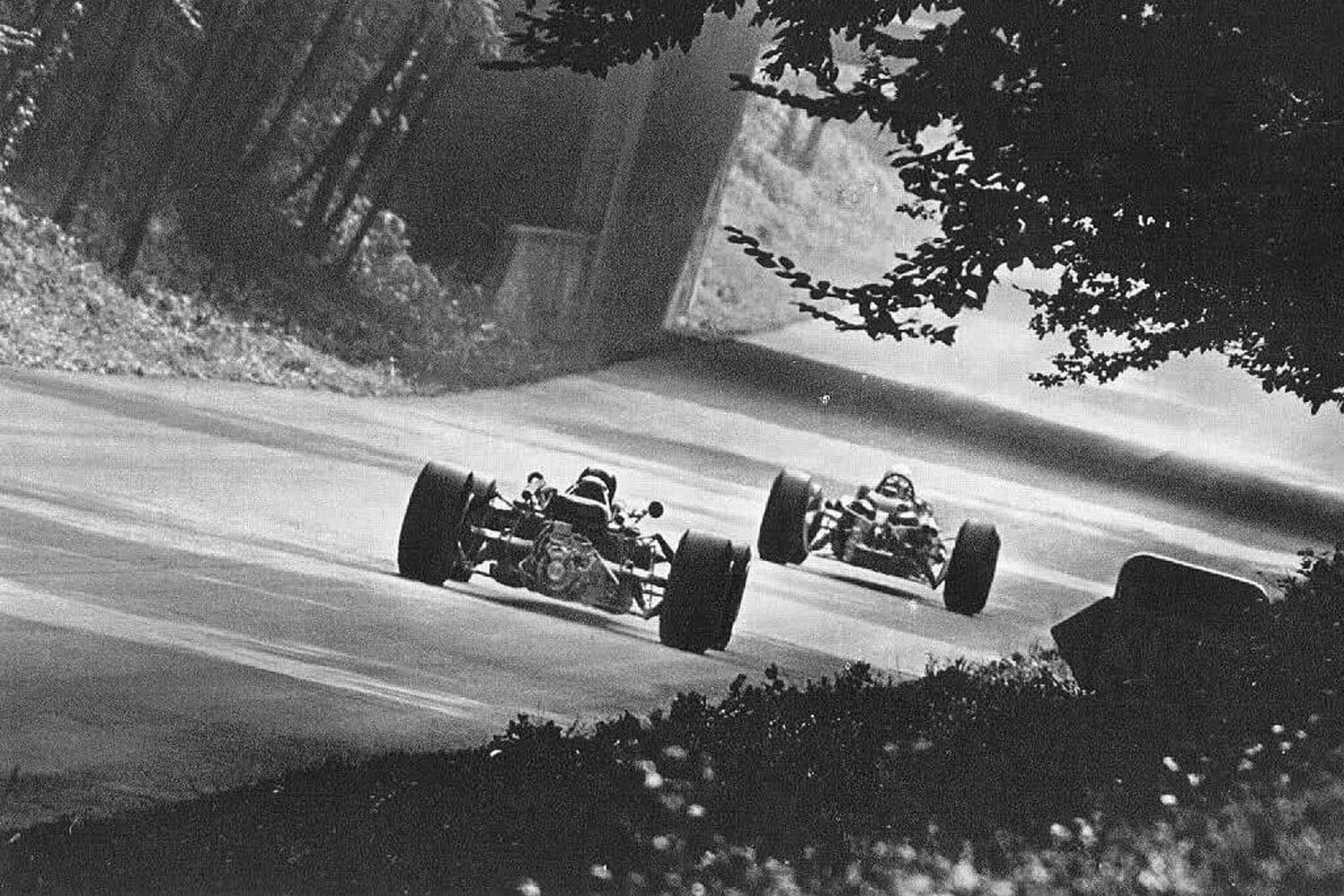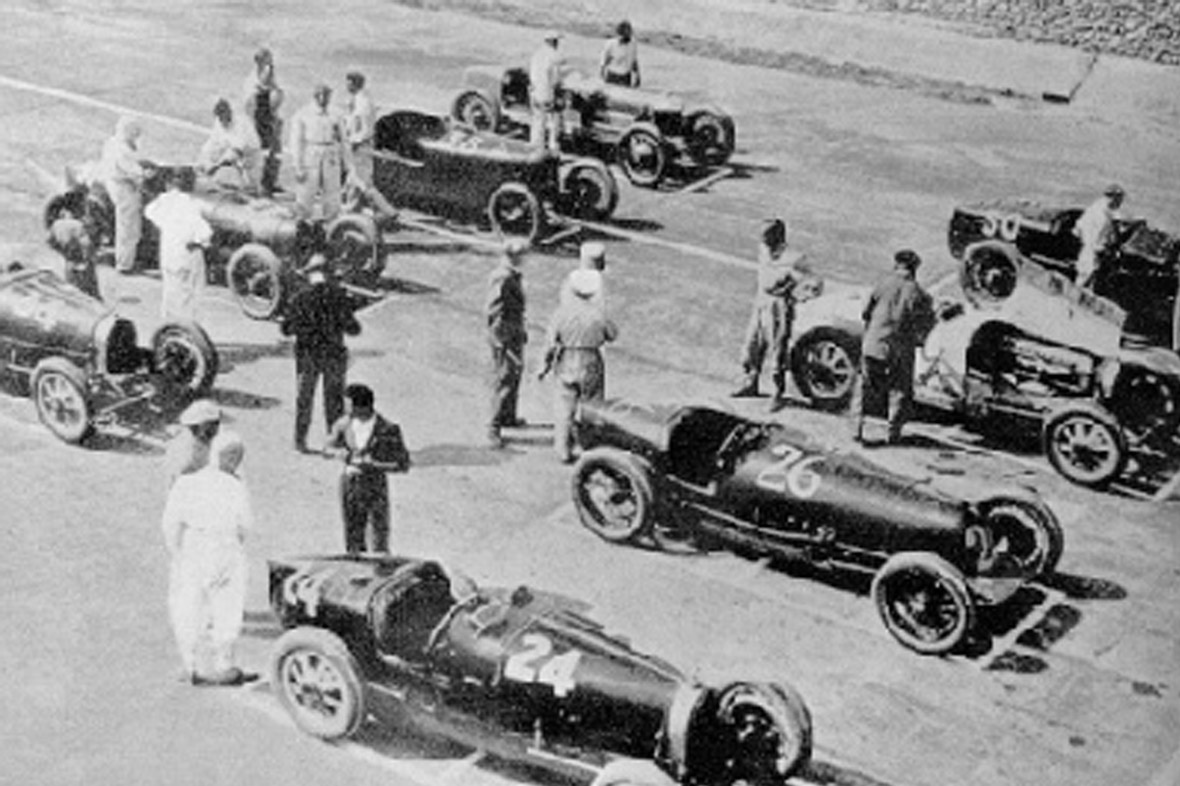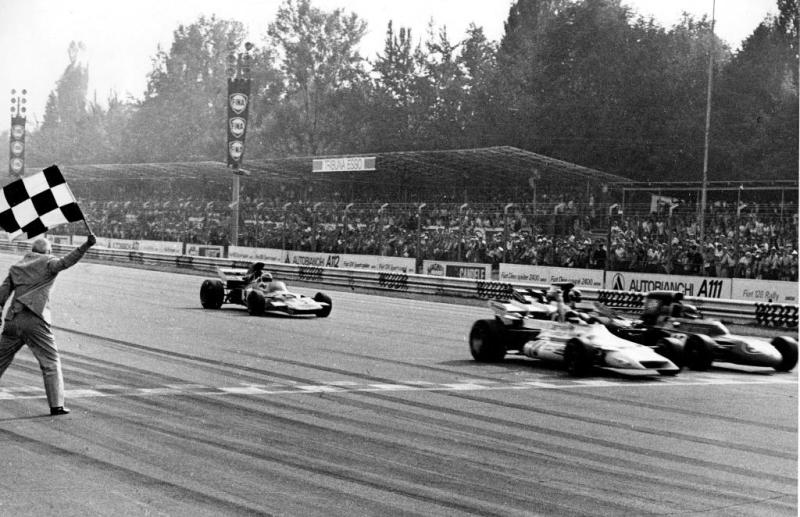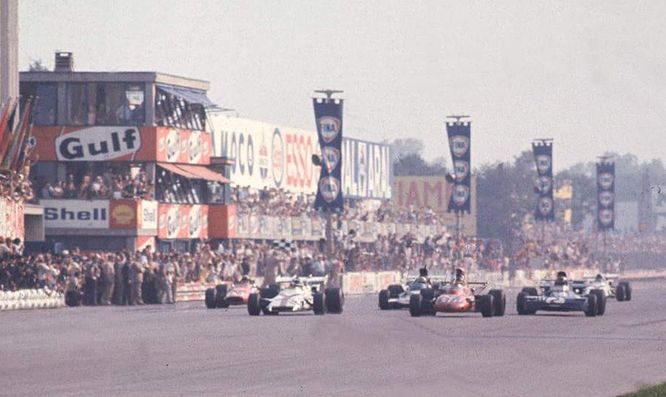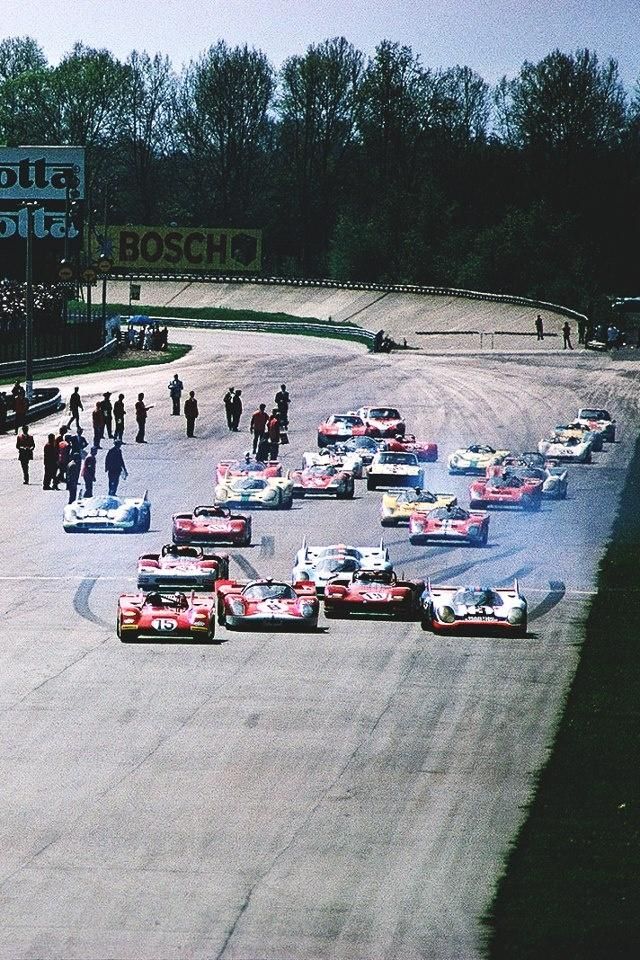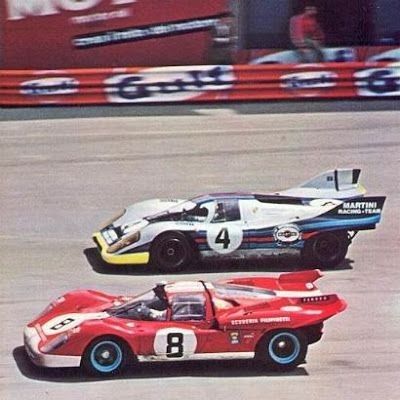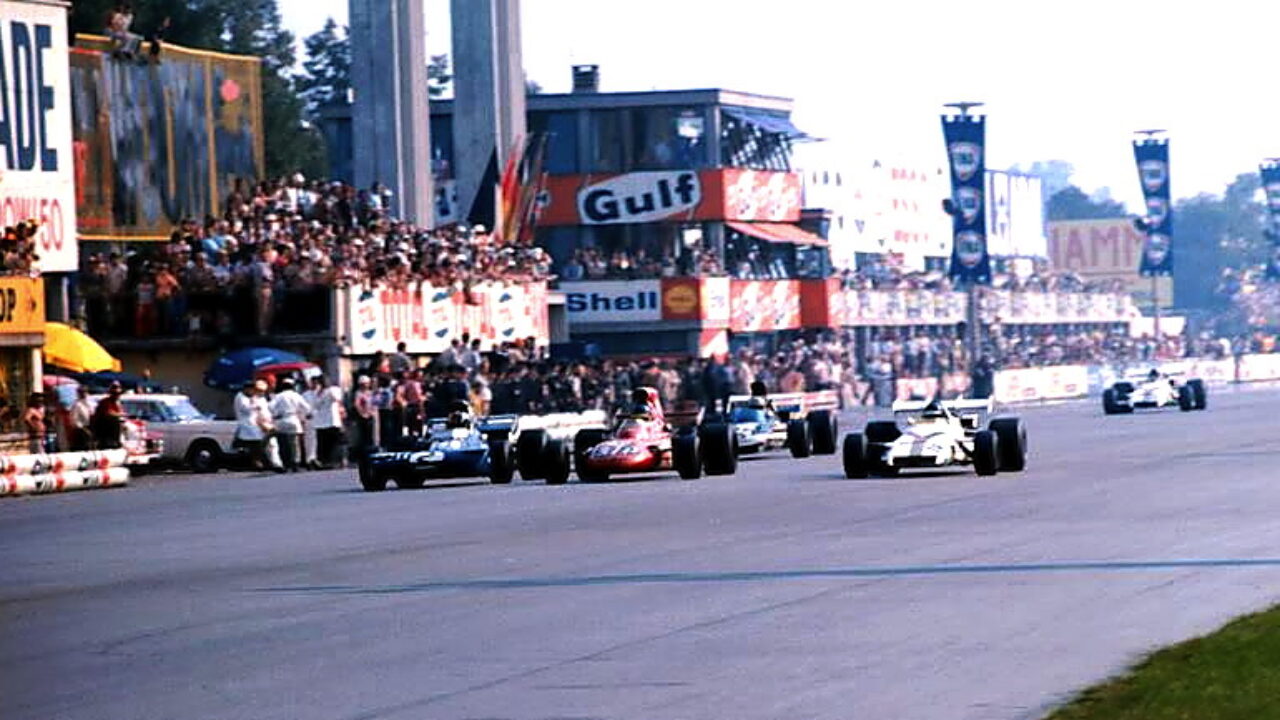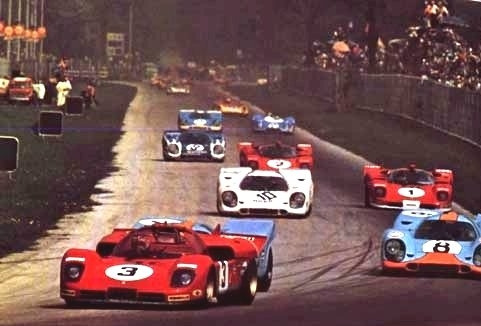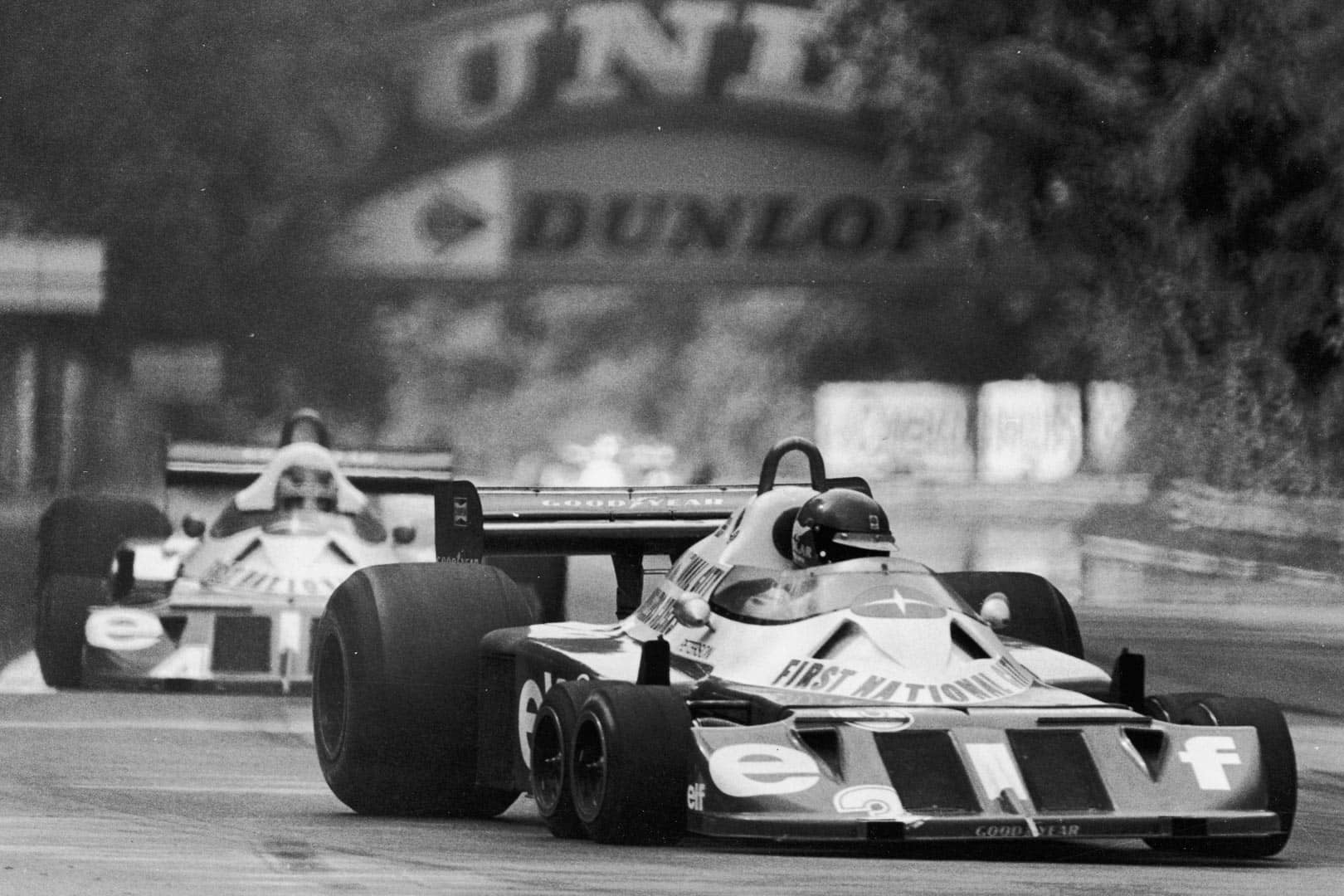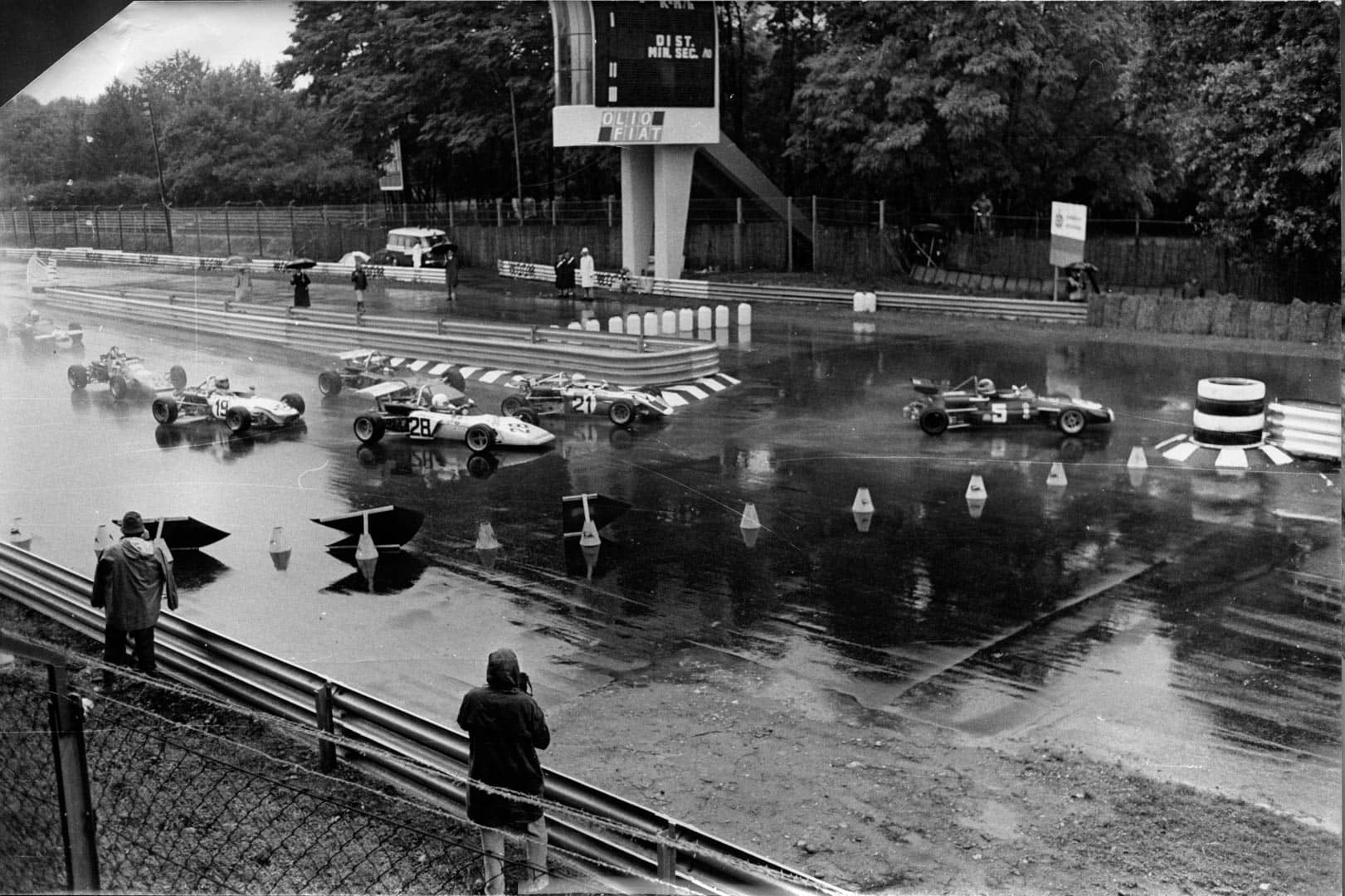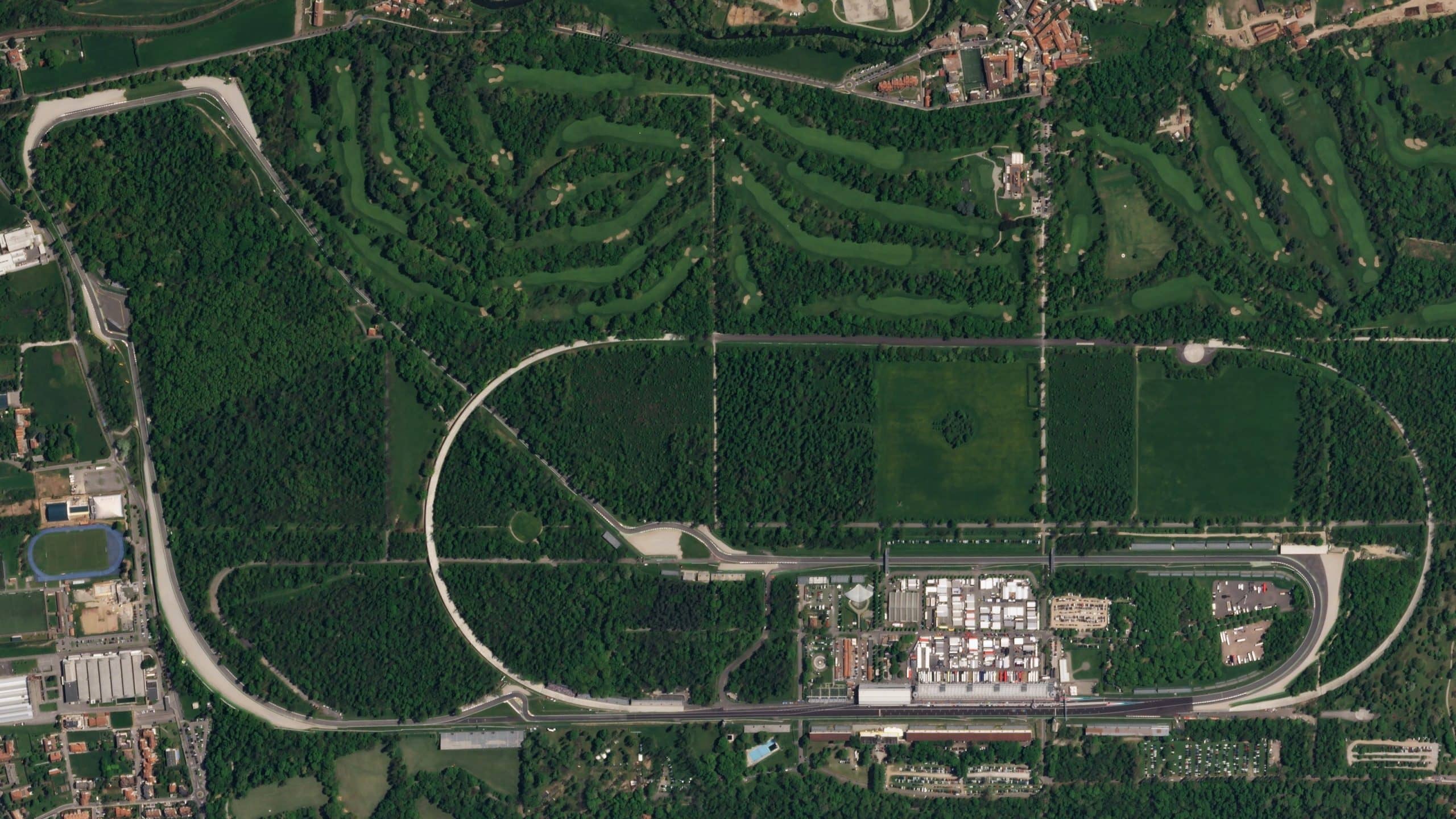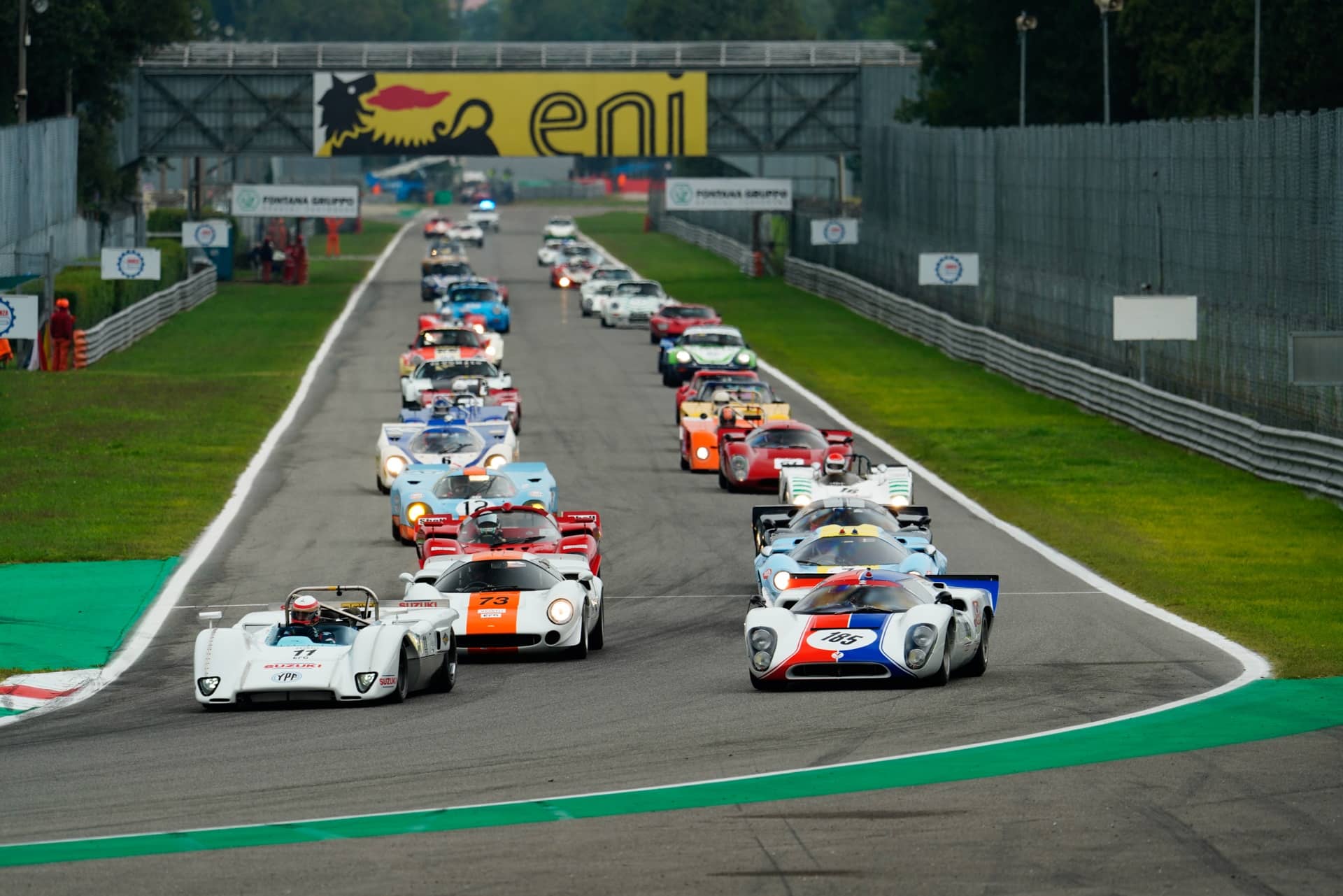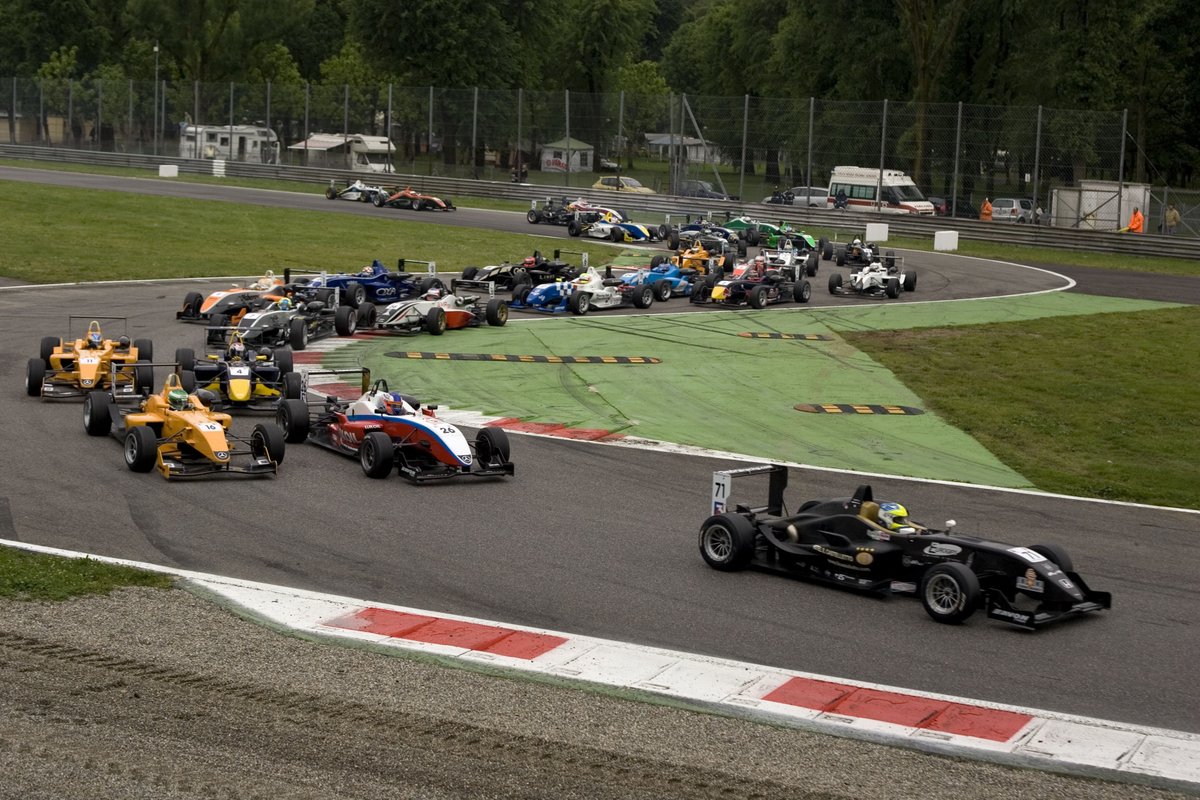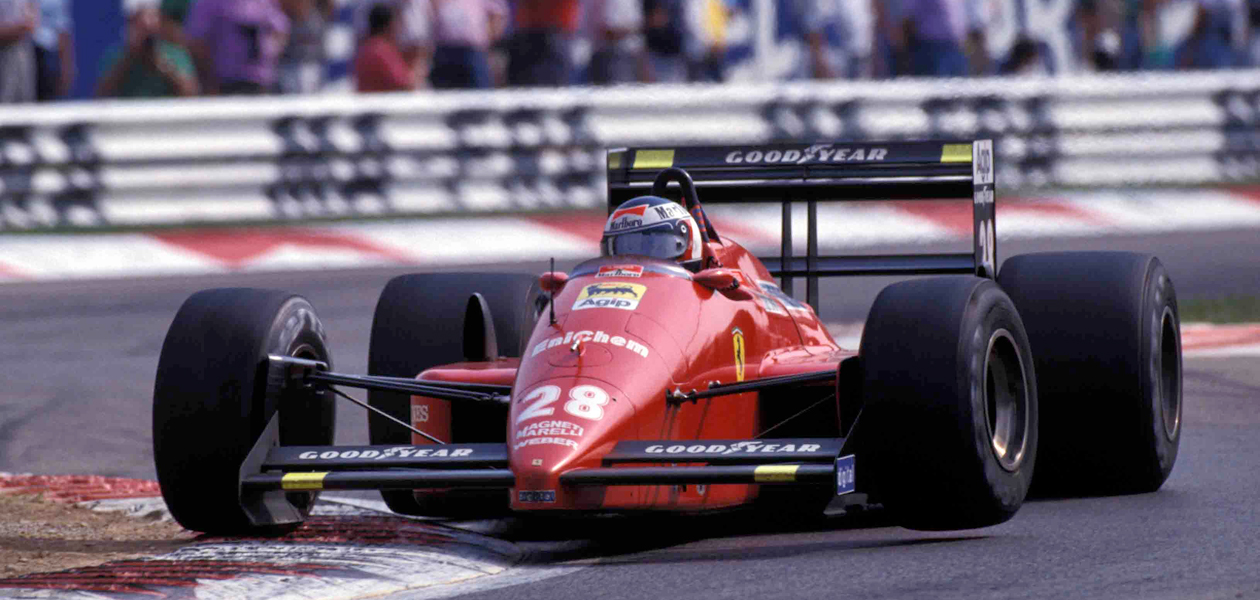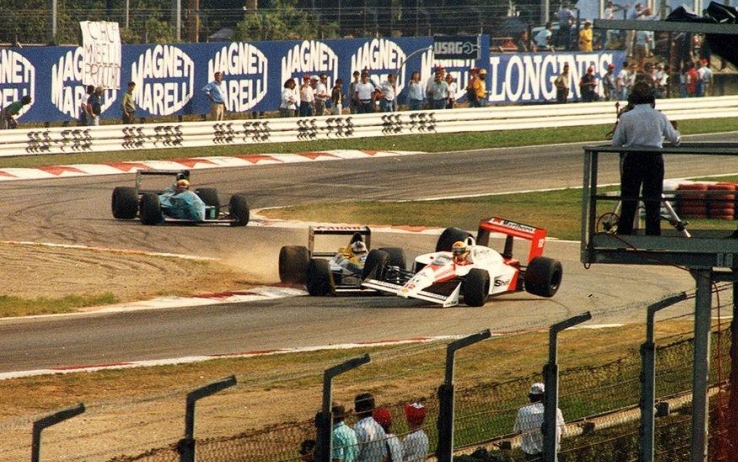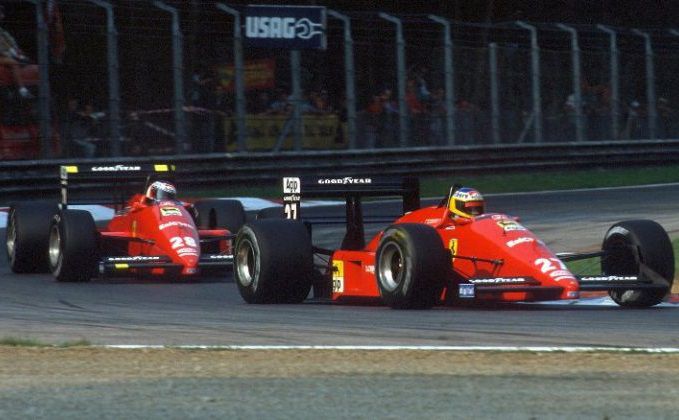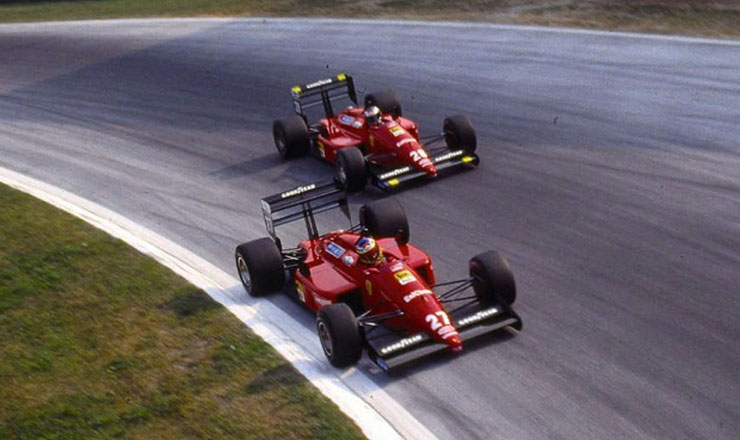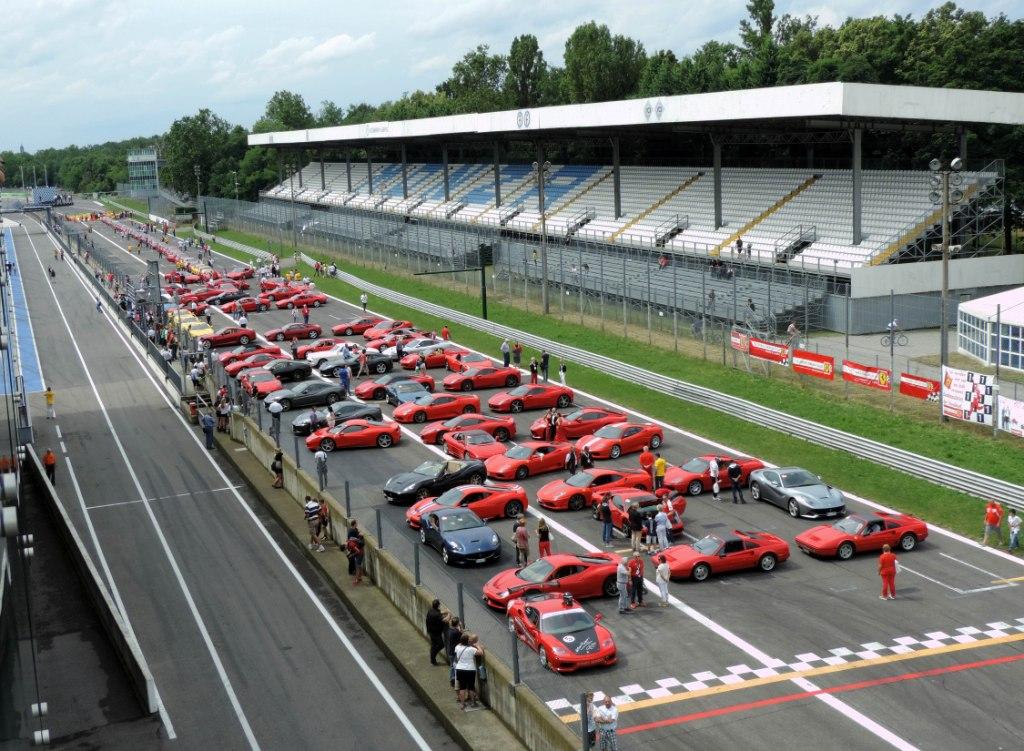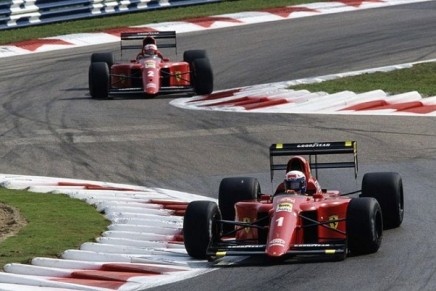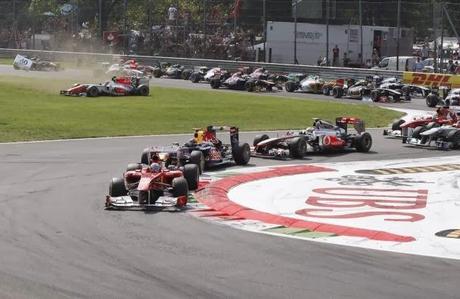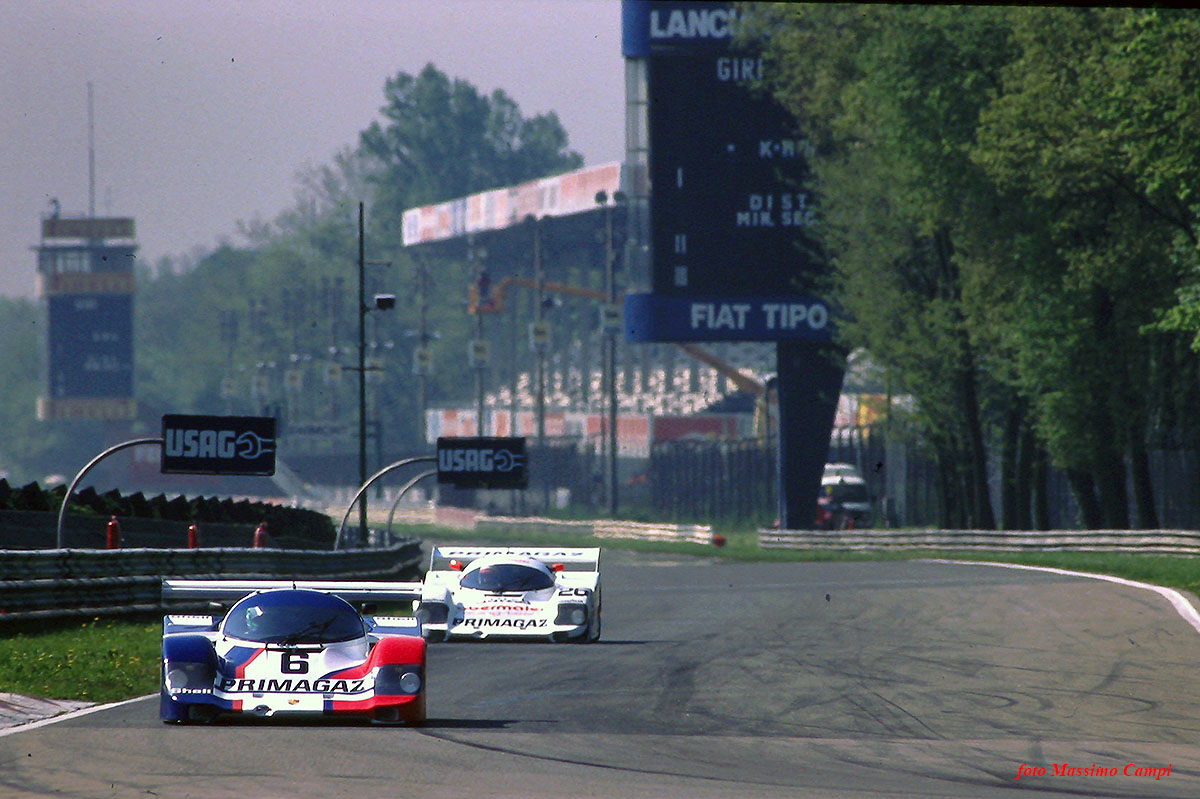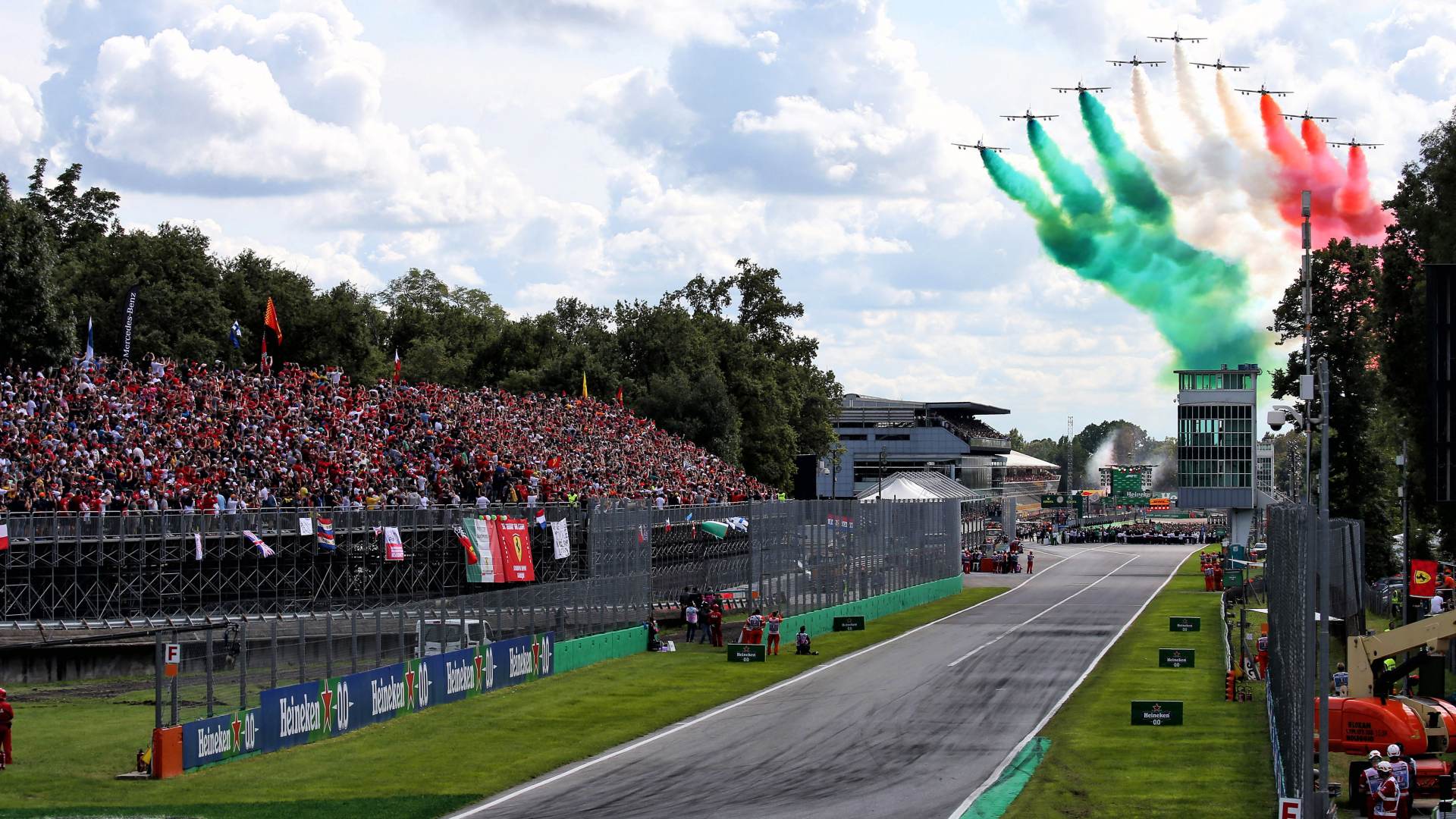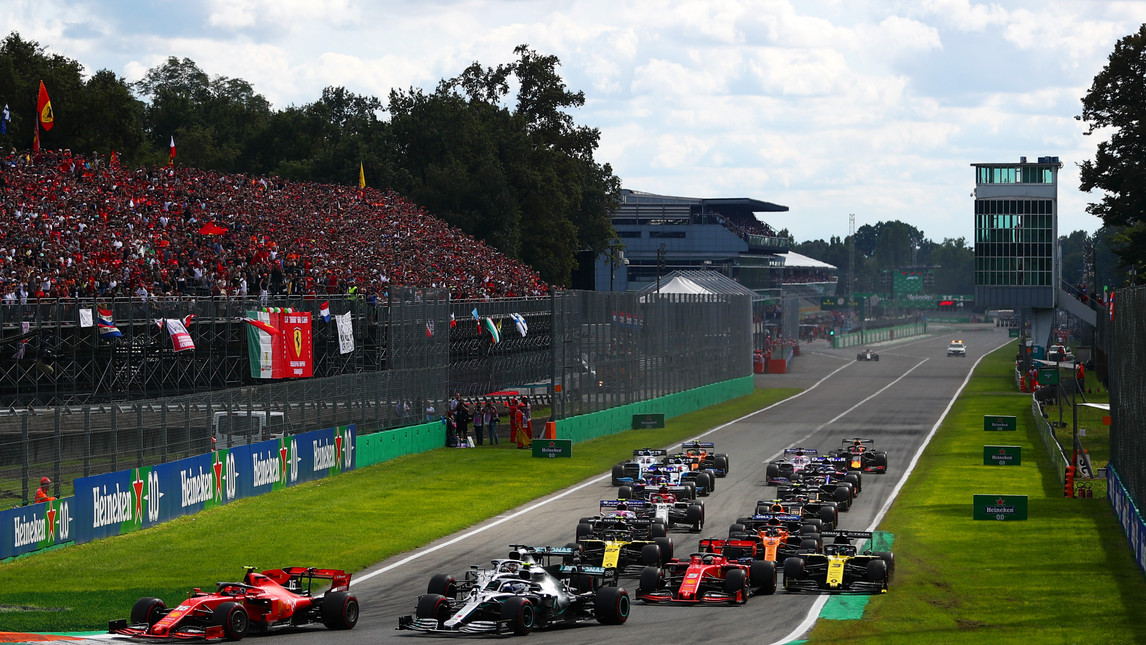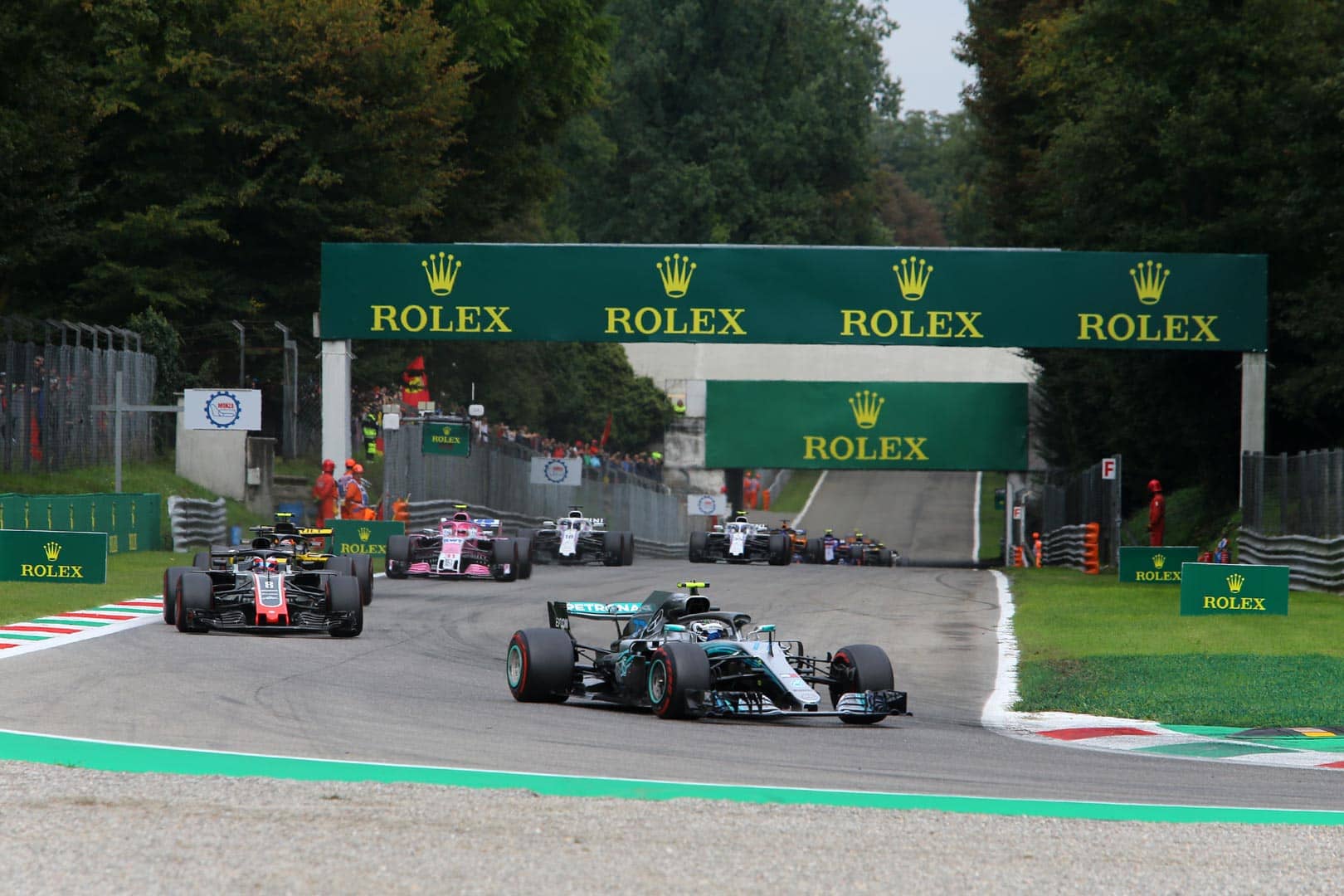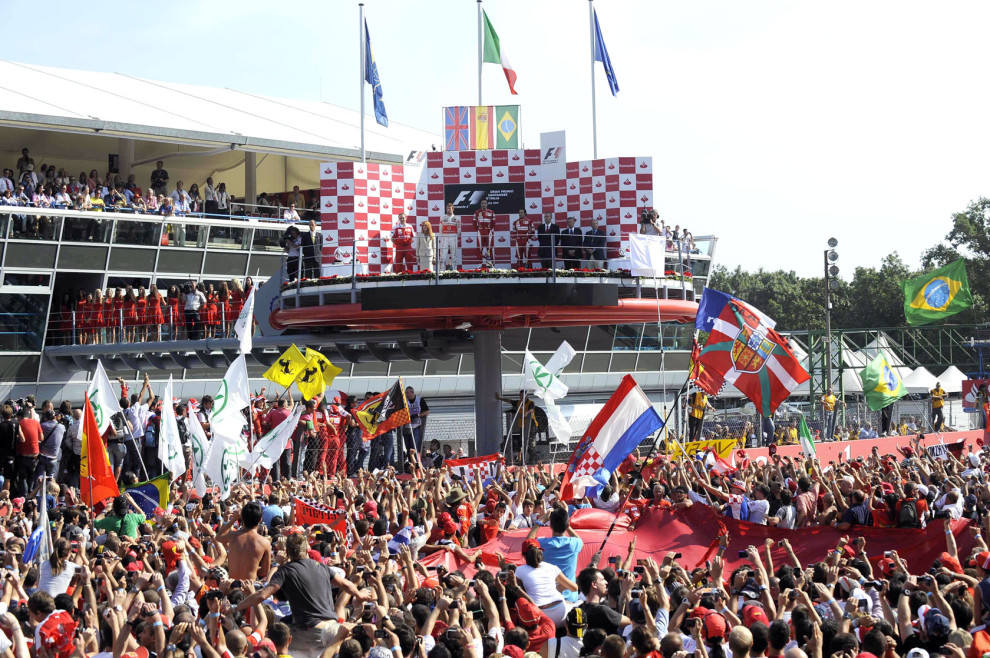History
Since 1922
The Autodromo Nazionale Monza is universally known as the Temple of Speed and represents a reference point for motor sports. Built in 1922 , third in the world after Brooklands and Indianapolis, it has been the scene of some of the greatest sporting and technological innovations. Its flyover ( link dedicated page) is unique in the world and important pages of world motoring but also scientific research have been written on its curves. The telepass, the guardrails and the draining asphalt, to name a few, have been studied and developed in Monza.
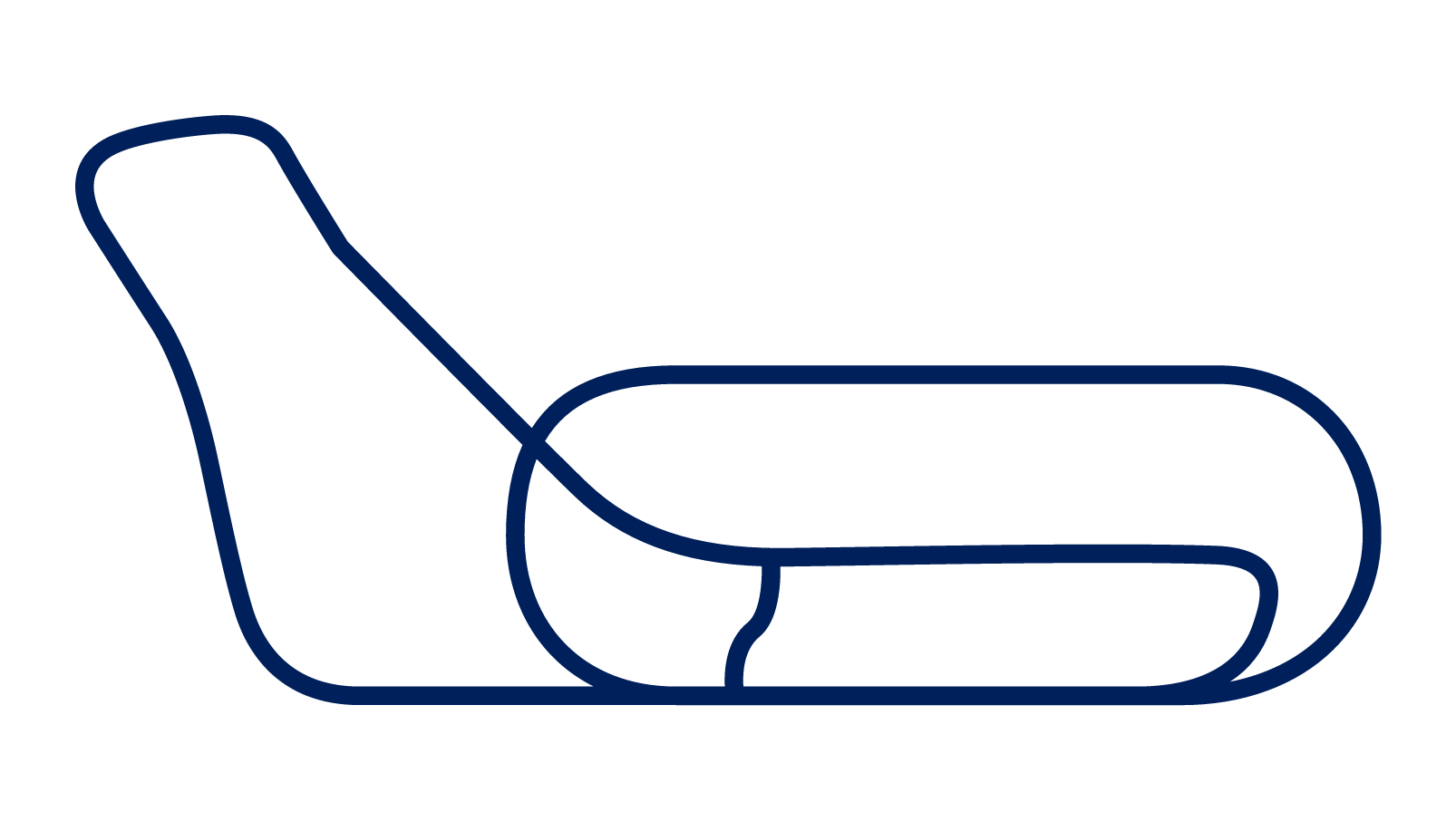
1922 - 1928
The construction of the Autodromo Nazionale Monza was decided in January 1922 by the Automobile Club of Milan , with the aim of celebrating the 25th anniversary of the birth of the Association. The construction of a racetrack was suggested by the technical and commercial needs of the various national manufacturers which, even then, aimed at exporting. A stable plant to be used for motor racing would also have allowed the carrying out of experimental tests of all kinds. Therefore, sectors for the development of speeds were included in the project, flanked by sectors of more varied conformation capable of stressing the complex of mechanical parts.
Added to this were the good technical and sporting results of the first Italian car Grand Prix , held the year before on the semi-permanent circuit of Montichiari, fast but not sufficiently equipped. Here the Frenchman Goux su Ballot had set the respectable average of nearly 145 km / h over a distance of 519 km. A worthy venue had to be found for the Italian Grand Prix, which aimed to replicate the glories of the already established Grand Prix of the Automobile Club of France.
For the construction and management of the racetrack, the Società Incremento Automobilismo e Sport (SIAS) with entirely private capital and chaired by Senator Silvio Crespi was set up at the Automobile Club of Milan. The project was entrusted to the architect Alfredo Rosselli . In the preliminary phase it was thought of a speed track and a road ring side by side, with a total length of 14 kilometers and an estimated cost of 6 million lire.
The first stone was laid by Vincenzo Lancia and Felice Nazzaro at the end of February 1922 , but the works were immediately suspended for reasons of “artistic, monumental and landscape conservation value”. In the intricate development of the controversy, the thesis of the absolute necessity of a racetrack prevailed, so in the end a circuit with characteristics similar to those originally planned was created, albeit with the overall development reduced to 10 kilometers .
The works began on May 15 with the commitment that they would be completed by August 15: 3500 workers, 200 wagons, 30 trucks and a 5-kilometer Decauville railway with 2 locomotives and 80 wagons were used. The racetrack was built in the record time of one hundred and ten days and the track was covered in its entire development for the first time on July 28 by Pietro Bordino and Felice Nazzaro aboard a Fiat 570 .
The circuit included a 5.5 km road track and a 4.5 km high-speed loop, featuring two elevated curves that allowed a theoretical maximum speed of 180/190 km per hour; the elevated curves were connected by two straights 1070 meters long each. The two tracks intersected on two levels by means of an underpass in the Serraglio area.
The public was hosted in two distinct areas: the grandstand with a capacity of 3000 seats and six lateral stands with 1000 seats each. The park enclosure included bleachers outside the high-speed curves, the south bend and near the confluence of the two tracks.
The official opening of the plant took place on 3 September 1922 on a rainy day, in the presence of the Prime Minister Facta, with the dispute of a race for small cars which was won by Pietro Bordino on a Fiat 501 model race.
The Motorcycle Grand Prix of Nations followed on 8 September, concluded with the overall victory of Amedeo Ruggeri on Harley Davidson 1000 and characterized by the splendid achievement of Gnesa with the Garelli 350 two-stroke in the 500 class, and on 10 September he competed for the second Italian car Grand Prix which was still the prerogative of Piping on the 6-cylinder Fiat 804.
1929 - 1939
In 1929 the cars competed only for the Monza Grand Prix which, for safety reasons, was only disputed on the high-speed ring. On that occasion, Varzi in an Alfa Romeo and Alfieri Maserati in a Maserati reached 200 kilometers per hour in the fastest lap for the first time. The same ring was used in 1931 for the Monza motorcycling Grand Prix in which the overall winner Taruffi on Norton recorded lap averages of almost 170 kilometers per hour.
In the meantime, the president of the Automobile Sports Commission, Vincenzo Florio, had studied a new track that left the circuit structures unaltered : on the so-called ” Florio circuit “, with an overall length of about 6,680 meters, the Grand Prix of motoring and motorcycling of 1938.
The complete circuit was resumed in 1932 and 1933 , the year in which Campari, Borzacchini and Czaykowski lost their lives on the elevated South curve. The triple fatal accident led to a series of alternative choices, including the insertion of two artificial chicanes: the result was extremely modest averages, in fact, the winners Fagioli and Caracciola on Mercedes barely touched 105 kilometers per hour. In the following two years the cars returned to the “Florio circuit”, in 1937 they competed on the Livorno circuit and in ’38 there was the last exhibition on the “Florio circuit”, crowned by the splendid victory of Tazio Nuvolari on Auto Union in front of the fort Mercedes team.
For political reasons, in the three-year period 1932-34 the motorcycles were transferred to Rome and competed for their Grand Prix on the Littorio circuit. They reappeared in Monza in the critical 1935, the year of the Ethiopian war and of the economic sanctions against Italy, taking part in a competition of a national nature only. In that edition, the twin-cylinder Guzzi 500 established an overall average of over 170 kilometers per hour and the supercharged four-cylinder Rondine 500 boosted 172 km / h in the fastest lap.
Having regained its role as an international “classic” in the two-year period 1936-37, the motorcycle competition highlighted the clear supremacy of Italian cars over the more celebrated German ones . In both editions, the Moto Guzzi 250s easily surpassed the supercharged 2-stroke DKW 2-stroke in the 350 class and at very high averages, while in the 500 class the twin-cylinder BMWs with superchargers were beaten in 1936 by the twin-cylinder Moto Guzzi. Tenni and in 1937 the supercharged Gilera four-cylinder from Aldrighetti who achieved an average of over 177 per hour on the fastest lap.
In 1938 was put in place a extensive program of plant modifications which included the reconstruction of the road layout, the demolition of the two elevated curves of the speed track, the construction of a new grandstand with more seats and a restaurant on the ground floor, new garages and service buildings and the renovation of the rankings for the public. The new route measured 6,300 meters and was used until the end of 1954.

1940 - 1954
The war brought about the suspension of all activities and during the war the racetrack assumed the most varied functions, including that of refuge for the archives of the Public Automobile Registry , for some offices of the Milan Automobile Club and even for the fairs displaced by the zoological garden of Milan .
In April 1945 a parade of Allied armored vehicles marched on the straight line of the stands which crumbled the bottom. A little later, large areas were used as a deposit for military vehicles and war residues. The complete restoration of the racetrack was decided by the Automobile Club Milano at the beginning of 1948 . For that year the top national motor racing competitions were held in Turin on the Valentino circuit, and motorcycling ones in Faenza.
In just two months, the system returned to its original functionality with the implementation of the changes planned at the end of 1938 and not yet implemented. On 17 October, the reborn Autodromo di Monza hosted the Formula 1 Grand Prix which was won by Frenchman Wimille in an Alfa Romeo 158 and, a week later, the short autumn season ended with the last round of the Italian motorcycle championship.
It is rather difficult to establish technical comparisons between the new road layout and the last “Florio” of 1938 . In fact, the construction formulas had changed over the course of time: the Grand Prix single-seaters had supercharged engines of 1,500 cc (compared to 3,000 cc in 1938) or atmospheric power engines of 4,500 cc until 1951, the Formula 2 of 2,000 cc. in the two-year period 1952-53, the new 2,500 cc Formula 1 from 1954. In the motorcycle sector, on the other hand, supercharging and special fuel mixtures were banned.
The speed of 188 kilometers per hour set by Sanesi on Alfa Romeo in the fastest lap of the car Grand Prix, but above all the record averages obtained on the lap in the motorcycle Grand Prix (177 per hour for 125 cc, 144 per hour for 250, 160 per hour for the 500), however, indicated that the new road route was faster than the “Florio circuit” of ten years earlier.
Meanwhile, the activities of the Autodrome had been enriched with numerous events : the Intereuropa Cup for touring cars introduced in 1949, and the Autodrome Grand Prix reserved for formula 2 single-seaters, with the exception of 1953 in which it was disputed with the International Sport Formula.
In 1954 the Supercortemaggiore Grand Prix , a race over a distance of 1,000 kilometers sponsored by the largest national oil company and reserved for cars in the Sports category up to 5,000 cc. The race was won by Mike Hawthom on Ferrati and in the following year by Jeans Beerà on Maserati.
1955 - 1971
In 1955, works were created that transformed the entire complex in terms of functionality . A 10-kilometer circuit was restored including, like the 1922 project, a road sector and a high-speed sector adapted to the new demands of competitions and record attempts. A ring was therefore created with two raised curves that followed the original layout, with an intersection with the road circuit. Regarding the road layout , it was reduced the length by shortening the central straight line and that of the stands, connected by the construction of a single pitch curve and slight transversal inclination, characterized by a growing radius towards the exit and therefore called “parabolic”. The length of the track was 5,750 meters .
The new high-speed track measured 4,250 meters and was built on reinforced concrete structures rather than an embankment. The two large elevated curves, with a radius of 320 meters and with a progressive gradient of up to 80% in the upper band, were calculated for a theoretical maximum speed of approximately 285 km / h.
Other improvements to the systems concerned:
- the construction of two large towers with luminous pictures placed on the sides of the grandstand and fourteen metal towers (seven along the road circuit and another seven along the high-speed track) for the display of the rankings to the public;
- new offices for the race direction ;
- 39 representation boxes ;
- a two-story press pavilion ;
- the displacement of the tribune which was outside the obsolete porphyry curves.
This circuit was adopted for the Italian automobile Grand Prix in the years 1955, 1956, 1960 and 1961. The high-speed track alone, as well as for numerous attempts at car and motorcycle records, was used in the two-year period 1957-58 for the contest of the 500 Miglia di Monza, a race open to Formula Indianapolis cars, valid for the assignment of the Two Worlds Trophy offered by the public administration of Monza. Jimmy Brian and his Dean Van Lines Special won two heats out of three and won the competition at an overall average of 257.594 km / h, with the fastest lap at 282.809 km / h.
The following year the Italian manufacturers fielded two Ferraris (one of 4,000 cc and another of 3,000 cc) entrusted respectively to Luigi Musso and Harry Shell , as well as a very special Maserati sponsored by the confectionery company Eldorado and driven by Stirling Moss. Musso set the best test time at 281 km per hour, and the car, with the collaboration of Mike Hawthorn and Phil Hill, finished third in the final classification, while Moss in a Maserati-Eldorado finished seventh. Jim Rathmann won on Zink Leader Gard Slp at over 268 average.
On the other hand, a different speech must be made for the Formula 1 single-seaters . In fact, it was precisely in those years that the new British construction trends began to assert themselves (rear engine, monocoque or in any case ultralight frames) that did not reconcile with the stresses imposed by the raised curves. The tragic 1961 Italian Grand Prix, which cost the life of Ferrari driver Von Trips and eleven spectators, marked the end of the use of this track for Grand Prix single-seaters.
It was instead used for the Monza Mille Kilometer , reserved for the Sports, Prototypes and Gran Turismo categories, from 1965 to 1969. The first edition was won by Parkes-Guichet in a Ferrari 330 P2. From 1966 two fixed chicanes were introduced at the entrance to the elevated curves and the track was lengthened by 100 meters. The winners of those editions were Surtees-Parkes in a Ferrari 330 P2 in 1966, Bandini-Amon in a Ferrari 330 P4 in 1967, Hawkins-Hobbs in a Ford GT 40 in 1968, Siffert-Redman in a Porsche 908 in 1969. From 1970 the Mille Kilometer moved to the street circuit of 5,750 mts and the first edition was the prerogative of Rodriguez at the wheel of the Porsche 917.
1972 - 1978
New safety measures were required in relation to the progressive increase in the performance of the cars . This was due, in addition to the increased power of the engines, to the adoption of large section tires with a high-grip compound and smooth tread, as well as to aerodynamic devices such as the rear wings and the front “whiskers” that allowed very fast cornering speeds. superior to the past. The general conditions of equilibrium that ensued had led to increasingly heated and dangerous competitions at Monza, with groupings of numerous cars in the leading positions. On the other hand, the cars themselves had become lighter and more fragile. In 1969 the Italian Grand Prix ended in a sprint; in 1970 Regazzoni distanced himself intelligently a few laps from the end; in 1971 there was another sprint finish. And these carousels took place at general averages increasingly close to 250 kilometers per hour.
Consequently, in agreement with the GPDA (Grand Prix Drivers Association), in 1972 two chicanes were created which had the purpose of reducing the speed at the entrance of the fastest curves of the track, the “Grande” or “Curvone” curve, at the end of the straight of the grandstands, and the “Ascari” curve or “Vialone curve” “. On this circuit, which measured 5,775 meters, the lap speed achieved with the single-seaters dropped to just under 216 km / h. The highest lap average of this circuit (223.501 km / h) was achieved in 1975 by Clay Regazzoni in a Ferrari. The chicanes, however, proved to be a makeshift solution and resulted in numerous accidents and collisions, albeit minor ones.
Parallel to the cars, at the beginning of the seventies also motorcycles adopted large tires with a high grip coefficient compound and later with a smooth tread which, allowing the riders greater lateral inclinations, enhanced the speed performance in corners, considerably increasing the risk. of falls and therefore the number of accidents. The bikes, however, continued to use the road layout without chicane and in the first half of 1973 there were two serious accidents . The first took place during the Grand Prix of Nations: shortly after the start of the 250 class, the seizure of a piston on Renzo Pasolini’s bike caused a general crash that caused the death of Pasolini himself and of the Finnish Jarno Saarinen. Forty days later, during a race for juniors, the “gentlemen” drivers Chionio, Galtrucco and Colombini fell and were fatally injured in the same spot.
From that moment, and until 1981, the motorcycle Grand Prix was transferred to another location and the bikes competed in Monza only on the junior track for the minor championships. Also in this field very high performance limits had been reached: a few hours before the accident, Pasolini had exceeded the average 200 km / h per lap with a 350 cc.
Following the constant incidents that denounced the inefficiency of the chicanes, major works were undertaken in the following three years to replace them with some changes to slow down the route . In 1976, to replace the chicane located on the straight of the grandstands, a variant was created that reduced the speed to about 100 km / h at the entrance and 120 km / h at the end. The maximum speed on the starting straight of the Grande curve was thus lowered from over 300 to around 180 km / h. At the same time, another variant was built about 300 meters from the entrance to the first right curve of Lesmo and brought the maximum speed on the entrance straight from 280 to 180 km / h. The introduction of the variants brought the length of the road to 5,800 meters and considerably reduced the travel speed . Ronnie Peterson in the March won the Italian Grand Prix that year at 199.749 km / h and set the fastest lap at 206.120 km / h, the latter limit improved by Mario Andretti with Lotus in 1977 (210.696 km / h) and in 1978 (212.562 km / h).
1979 - 1988
As is well known, the search for the so-called “ground effect “, achieved by means of the special shape and the sealing with side strips of the bottom of the F1 cars, as well as the weight reduction and the almost total elimination of the suspensions, further increased cornering speed and significantly reduced the driver’s control over the behavior of the car. For this reason, interventions to adapt the safety conditions were necessary, as well as substantial modifications to the systems.
Adhering to the requests of FOCA (the Association of Formula 1 Constructors) the pit area was restructured as follows:
- the number of pits increased from 30 to 46 ;
- behind the pits a ” paddock ” and a testing area of over 9000 square meters was created;
- the front box corridor was extended from 9 to 12 meters and divided into three lanes.
The buildings created are of striking beauty and, despite their size, harmonize with the surrounding park. In this regard, the then President of the FIA, Jean Marie Balestre, said: “While respecting the environment, an extraordinary building was built with intelligence, creativity and passion, a work that does honor to Italy, to the world championship. , to motor sport “.
The safety conditions were also improved with the following measures:
- further extension of the external quay in the stretch of about 300 meters of the Grande curve up to the curve of the Roggia, with consequent displacement of the existing Dunlop bridge (later Campari) and the extension of the external quay along the last 300 meters of the “Parabolica” curve, as well with arrangement in sand and installation of tire barriers;
- replacement of the internal curbs of all variants with new ones, lower and with a more attenuated profile;
- improvements to the protections in the area of the second Lesmo curve , by moving the “guardrail”;
- creation of a service road for emergency vehicles that reaches the curve of the Serraglio.
In the meantime, the press room was enlarged , a terrace with a bar was built and the renovation of the structures continued in the following years;
- 1982: New podium for the award ceremony;
- 1983: Expansion of the paddock with the addition of 3,500 square meters;
- 1983-85: Replacement and coverage of all the stands of the central straight at the sides of the grandstand for a total of 8,943 seats;
- 1985: Strengthening of the anti-invasion devices along the entire route, modification of the junior junction with the extension of the safety zones at the entrance and exit, obstruction of a new building of the campsite for acceptance, offices and the shop;
- 1986: Repaving of the 20,000 square meters of the paddock, of which 3,500 covered with ecological tiles;
- 1987 Refurbishment of the roof of the Lesmo grandstand, which collapsed after an exceptional snowfall;
- 1988 Replacement of the grandstands of the South curve with a new covered grandstand capable of seating 2,500;
- 1988-89 Replacement of all braking systems with tire barriers and the tripling of approximately 3,000 meters of guardrail.
The F1 Italian Grand Prix continued to take place on the 5.8 km road track which had remained unchanged since 1976. In 1979, Ferrari returned to victory with Scheckter at an average speed of 212.185 km / h, a success that gave him the title of Formula 1 Drivers World Champion.
In 1980 the Italian Grand Prix was held on the Imola circuit , with Piquet’s victory over Brabham.
In 1981 the Grand Prix returned to Monza and was won by Prost in a Renault. The passion of sportsmen was continually stimulated by the challenge between Ferrari, Renault, Brabham, McLaren, Williams and other famous teams that with their single-seaters equipped with turbocharged engines of one and a half liters of displacement determined a significant increase in specific powers and, therefore, a considerable increase in general averages. In fact, if in 1982 Arnoux won the Grand Prix with Renault at over 219 km / h on average, in 1987, after a constant increase in speed year by year, it reached over 232 km / h with which Piquet took his victory. Williams.
The last triumph of a supercharged engine at Monza was that of Berger’s Ferrari, followed in second place by teammate Alboreto, in 1988, just a few weeks after the death of Enzo Ferrari. In recent years, the three victories of Piquet (in 1983 over Brabham and in 1986 and 1987 over Williams), of Lauda (in 1984 on McLaren) and of Prost (in 1985 on McLaren).
Other important sporting events of the period were those with the classic Mille Kilometer – Caracciolo Trophy , which recorded a supremacy of the Porsches between 83 and 86 and of the Jaguar in 87 and ’88. In 1988 the F3000 International Championship , a real antechamber of F1, and four times (1981, 1983, 1986, 1987) the two-wheeled racing cars of the world speed motorcycle championship were still on stage with the traditional Grand Prix of Nations which in the larger displacements saw the confirmation of the dominance of the Japanese brands (Yamaha and Honda) whose half-liter four-cylinder engines managed to exceed an average of 190 km per hour in the fastest lap. Among the pilots stood out those of the American school Roberts, Spencer and Lawson and the Australian Gardner. The flag of the European industry was held high by the Italian 125 Garelli, and during the 1986 Grand Prix the winner Fausto Gresini reached a record average of almost 168 kilometers per hour.
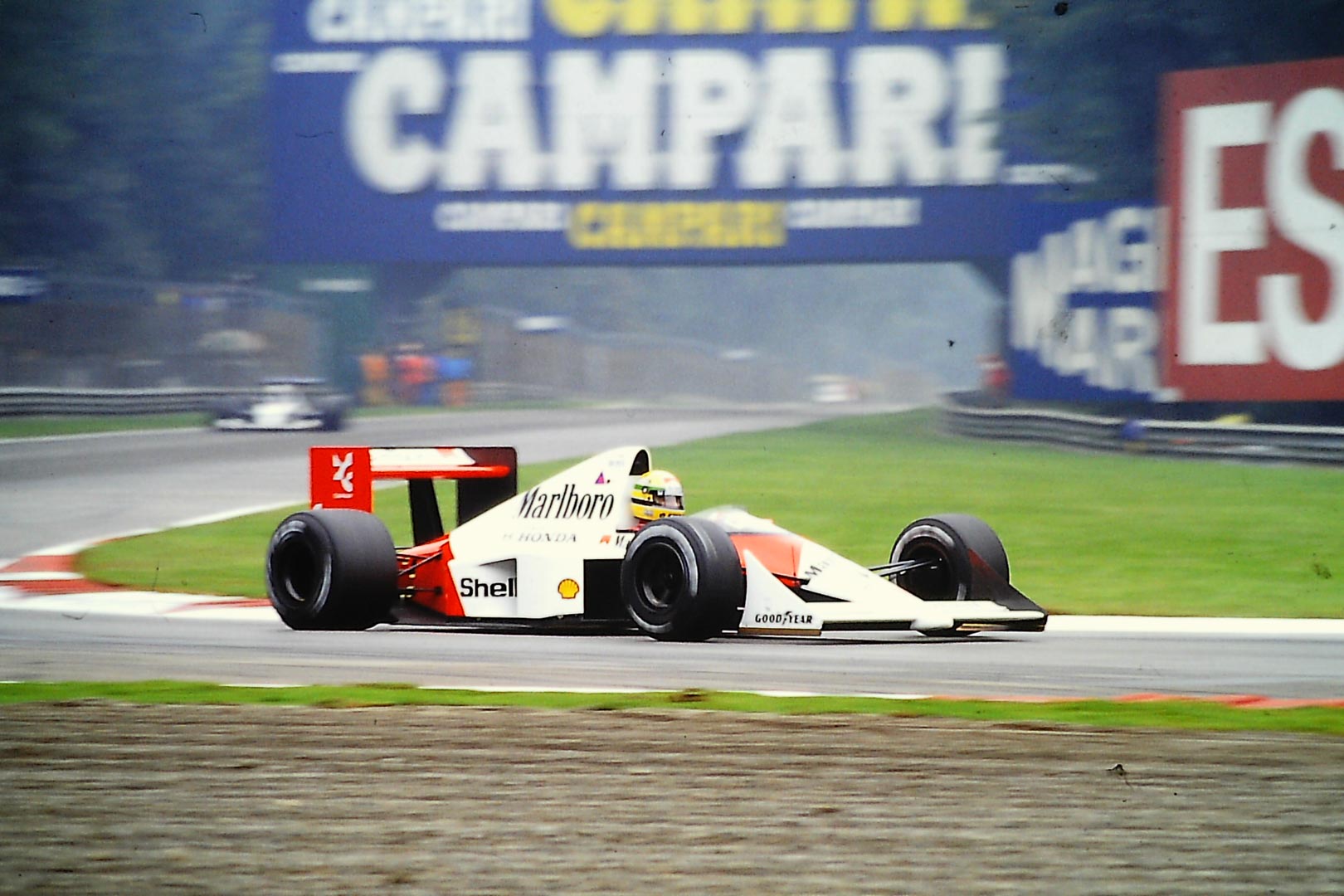
1989 - 1997
In 1989 it was finally possible to start the work to enlarge the boxes and upgrade the printing facilities , which had long been requested by both FISA and FOCA. The new garage complex occupies an area of 2532 square meters and extends for a length of 196.30 meters, a width of approximately 12.90 meters and a total height of two floors above ground. The image is that of a high-tech construction with remarkable visual lightness . The inclination of the fully glazed wall on the track front performs three important functions: to avoid the reflection of sunlight on the track and therefore the glare of the drivers, to reduce the transmission of heat inside, to allow easier visibility of the pit lane where they stop. the cars.
The box system consists of 48 modular elements by means of movable walls, designed to accommodate 16 teams of 2 Formula 1 cars. On the first floor, completed in the summer of 1990, there is a press room that can accommodate 370 journalists, with relative offices, rooms for telephones and faxes. Furthermore, next to the press room there is an area equipped to accommodate 80 photographers with development and material storage rooms. Another 4 photographic laboratories are located on the roof of the first floor. On the first floor there are also halls and offices for the needs of the organization, for hospitality and for other services.
In 1989 , important interventions were carried out to improve the technological systems and in the central grandstand, where the press grandstand was, 36 soundproof booths were built for commentators and radio commentators, increased by 9 on a temporary structure in large events. The medical center was then expanded with 3 medical rooms and 2 resuscitation rooms.
As part of the renovation works, the new management offices of the Autodrome were also built and offices were created for the CSAI (Italian Automobile Sports Commission). Along with the structures, the technological systems have also been upgraded or replaced and new ones have been installed. These include the integrated system for the detection, processing and transmission of data, as well as for the remote control of the closed circuit television system and for the connection of the track telephones, with renewal of the related equipment. An avant-garde system which, through a series of 31 detection points and two lines of cables suitable for transmitting radiofrequency signals, runs alongside the route and allows instantly provide all the information relating to the cars in the race (positions, speeds, lap-by-lap times analysis and for each section of the circuit). The integration of this computer system with the closed television circuit makes it possible to automatically follow the car from the pits along the entire length of the track. This service can be carried out for a maximum number of 48 cars running simultaneously on the track.
These are the years of Prost, Senna, Mansell, Schumacher and Villeneuve. In particular, in ’97, Michael Schumacher came to Monza as the leader of the drivers’ world championship and with Ferrari in the same position among the constructors, as had not happened since 1979, the year in which Jody Scheckter won the Gran Italian Prize and then the World Championship. A record number of spectators , around 180,000 people, attended the tests and the race that was won by David Coulthard with McLaren Mercedes.
As for Formula 1, the track records belong to Jean Alesi , who in 1997 conquered pole position at an average of 250,295 km / h, and to Mika Hakkinen , who, also in 1997, set the fastest lap of the race. at an average of 244.929 km / h. The distance record belongs to David Coulthard with an average speed of 238,036 km / h.
As for the Sports cars , the delay in the construction of the new boxes, due to the difficulties in obtaining the authorizations, forced the Caracciolo Trophy to be canceled in 1989, which was then resumed from 1990 to 1992.
In 1990 the F3000 and the motorcycles of the World Superbike returned, which later became an annual fixture on the Autodrome calendar. During this period the F3 races continued with the Lottery Grand Prix , those of the CIVT Touring and Superturismo cars linked to the Carri Cup , the historic cars of the Intereuropa Cup , the small single-seaters of the T rofeo Cadetti of F Junior Monza , and finally the rally cars.
In 1997 the Sports cars returned to the track for a new edition of the Mille Kilometer – Angiolini Trophy , while among the minor categories, the F Alfa Boxer and F2000 series ended in ’95, races of the Renault, Ferrari and Porsche single-make Cups, the Italian Prototype Championship, slalom and races were held in Monza ” motorcycling club ”.
In addition, the Autodrome continued to be a large leisure and non-motor sports center including the non-competitive “Formula One” foot race, the multi-sports festival, model car races, bicycle races, car auctions, an antiques and modern art exhibition-market and a large exhibition of new car models, called Motormonza, with the possibility of track tests.
1998 - TODAY
In the two-year period 1994-1995 the Monza track was again the subject of some interventions aimed at adapting to the safety standards required by the FIA :
- Redefinition of the design of the second Lesmo curve , redone with an almost “elbow” configuration and therefore with a narrower radius (36 meters) than the previous one. In this way the speed of the curve has been significantly reduced;
- The Grande curve was moved inwards by about ten meters and this led to the reduction of its two radii, which went from 325 and 450 meters, to 290 and 395 meters respectively;
- The variant of the Canal has been brought forward by about 50 meters in order to position it in a point with wider lateral margins .;
- The entire stretch of the two Lesmo curves , from the entrance of the first to the exit of the second (including the connecting straight) has also been set back towards the inside of the track by about fifteen meters to increase the escape space;
- The first curve was also tight and its radius increased from 98 meters to 75, while the second, with a radius increased to 35 meters, remained almost identical to the one drawn the year before.
After all the “shifts” the total development of the circuit has decreased by 30 meters compared to the previous 5,800 (now it is 5,770 meters).
Other works from 1994-1995 :
- new medical center , larger, more modern and easier to reach even from the pits;
- rescue heliport ;
- the road surface has been resurfaced and made flatter and smoother in the section that runs from the Ascari variant to the vicinity of the first variant;
- new curbs on the track (in particular those of the Ascari and Roggia variants);
- the escape space of the first variant has been enlarged ;
- the pit lane wall was raised by 50 centimeters.
Overall, the work cost SIAS about 5 and a half billion lire. For each tree cut, three trees were planted in other areas of the Autodrome area for a total of 555.
In the summer of 2000 the first variant was redesigned which, from an “S” with left-right-left curves, was transformed into a narrower and therefore slower double right-left curve . The straight line between the entrance and exit of the Roggia curve was then lengthened by 10 meters. These two interventions have brought the length of the roadway from 5,770 meters to 5,793 meters.
The renovation and expansion of the Autodrome facilities continued between 2001 and 2003 with works that have increased its functionality under the sporting aspect and improved its accommodation and hospitality capacities. The pit complex has been extended with a new span of 50 meters, so as to bring the pits available to the stables from 48 to 60 and to create new spaces on the first floor for the various services and for the race direction. Another novelty was the expansion of the press room which is now equipped with 540 positions for journalists as well as areas for the press office, for telecommunications and various service rooms. The press room was dedicated to Tazio Nuvolari, the great automobile and motorcycle champion whose fiftieth anniversary of his death occurred in 2003. A new paddock was then created for the support races, behind the F1 paddock, with entry to the track on the central straight.
Other changes include the 4 meter widening of the pit lane and the relocation of the “village” with the shops, the bar and the bank counter located in the former Festival pavilion. The area of the old village is now part of the paddock, in which the restaurant building remains, which is used, among other things, as a room for photographers on the occasion of the most important events.
After the radical interventions implemented in 1989-90 and 2001-2002, the racetrack has completely changed its appearance becoming one of the most beautiful and functional in the world .
As far as competitions are concerned, it is easy to outline the world of Formula 1 at the beginning of this century: an extraordinary series of successes for Ferrari and its driver Schumacher, who have won all five world titles both among the Constructors and among the Pilots. Ferrari has thus won nine Constructors’ titles since 1958 (the year it was established) and Schumacher seven. In recent years, the Italian Grand Prix has been won twice by Michael Schumacher (in 2000 and in 2003), once by Juan Pablo Montoya in a Williams-BMW (in 2001), and twice by the other Ferrari driver Rubens Barrichello (in 2002 and 2004).
In the meantime, speeds have increased . In 2003 Michael Schumacher won with an average of 247.585 kilometers per hour, while Rubens Barrichello, in 2004, set the race lap record of 1’21 ”046, at an average of 257.320 kilometers per hour.
Monza thus confirmed itself as the fastest track in the world . The authentic Temple of Speed.
